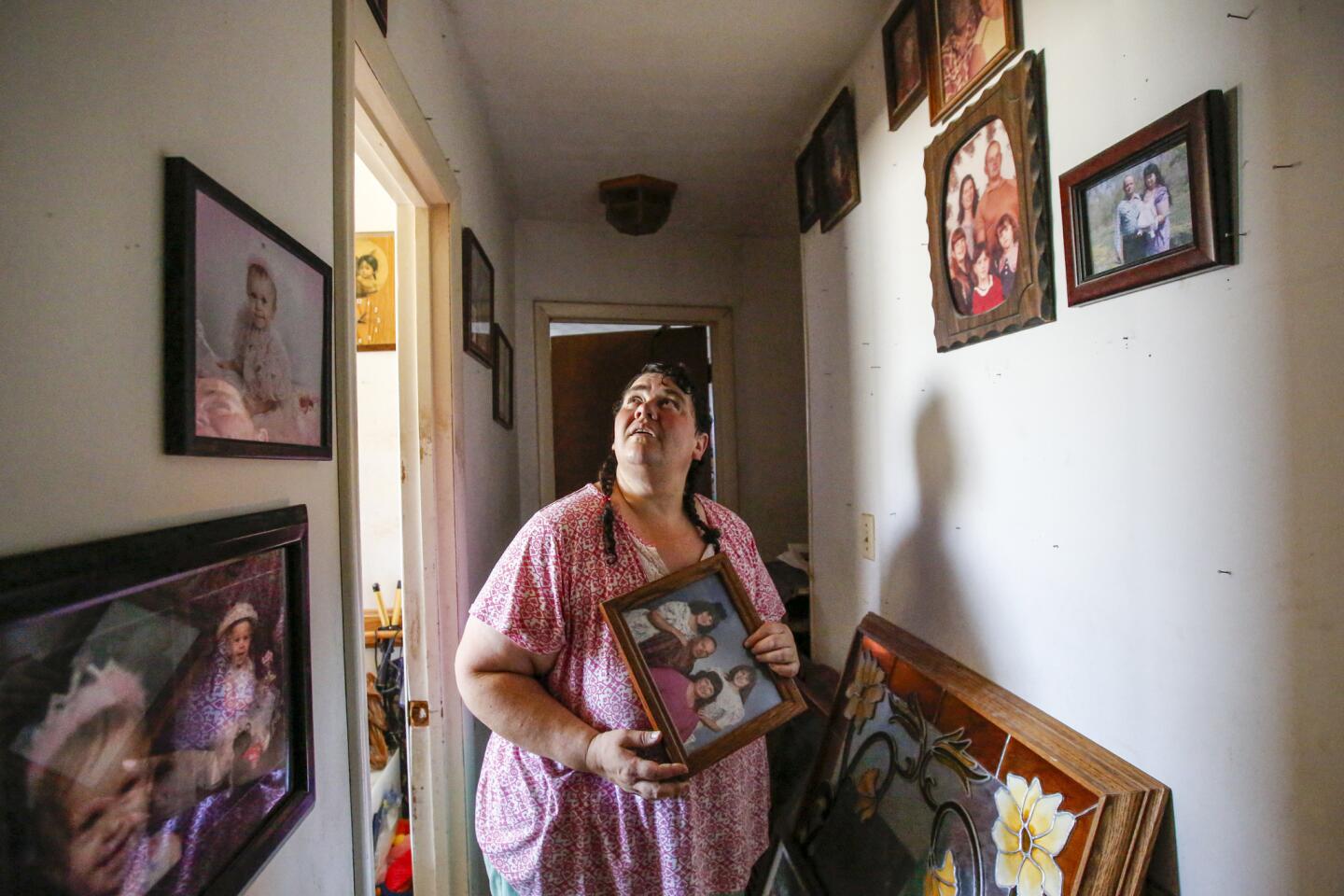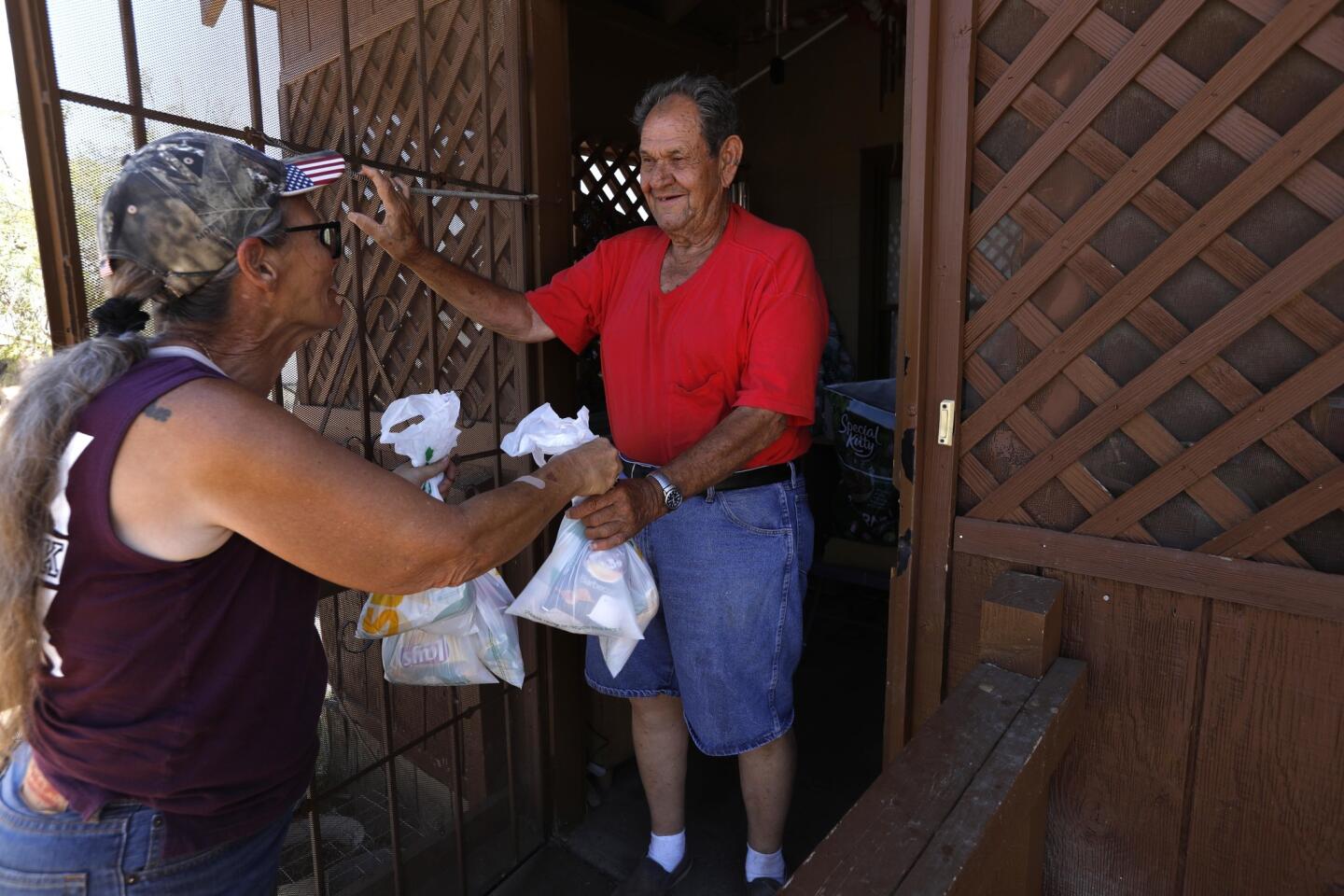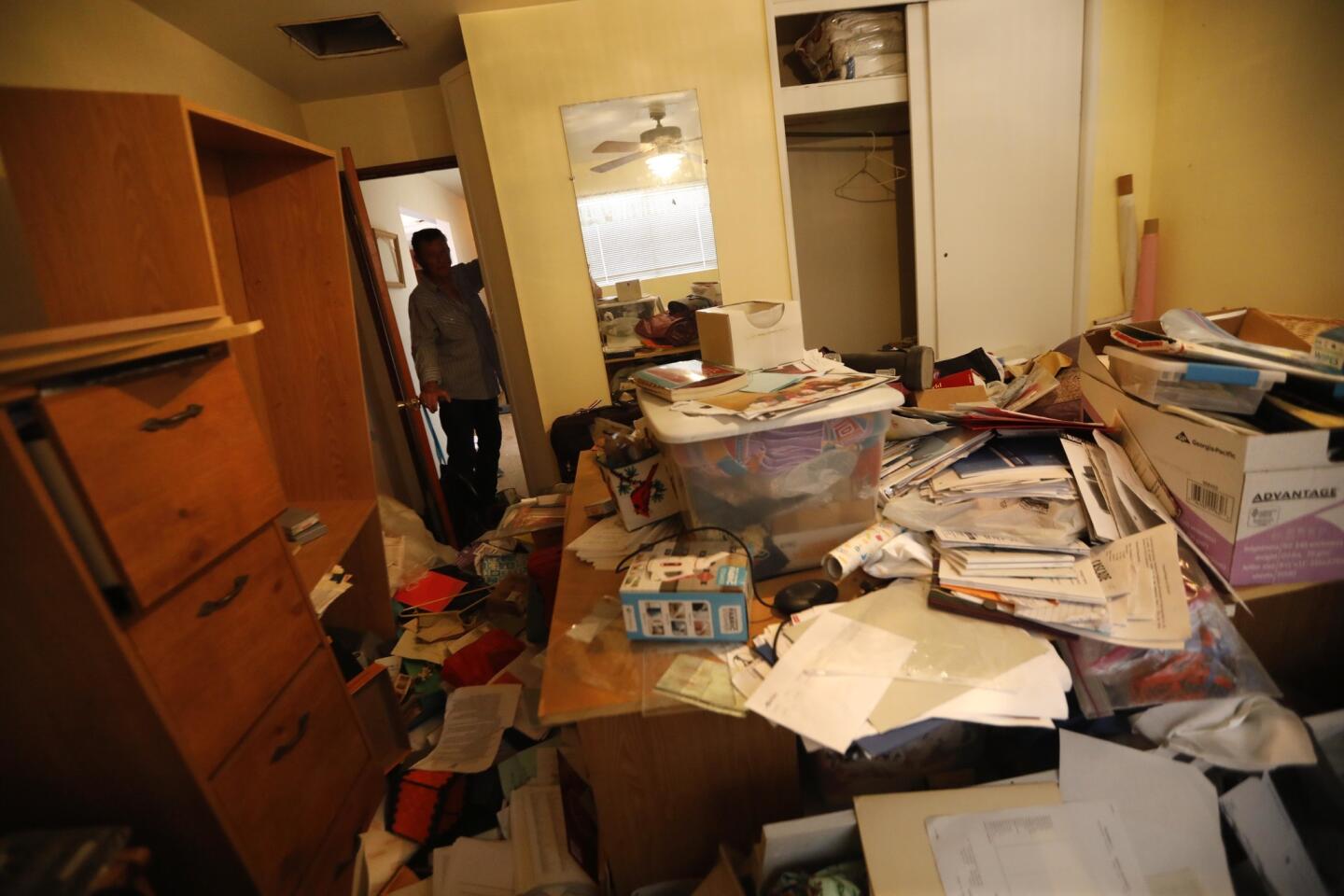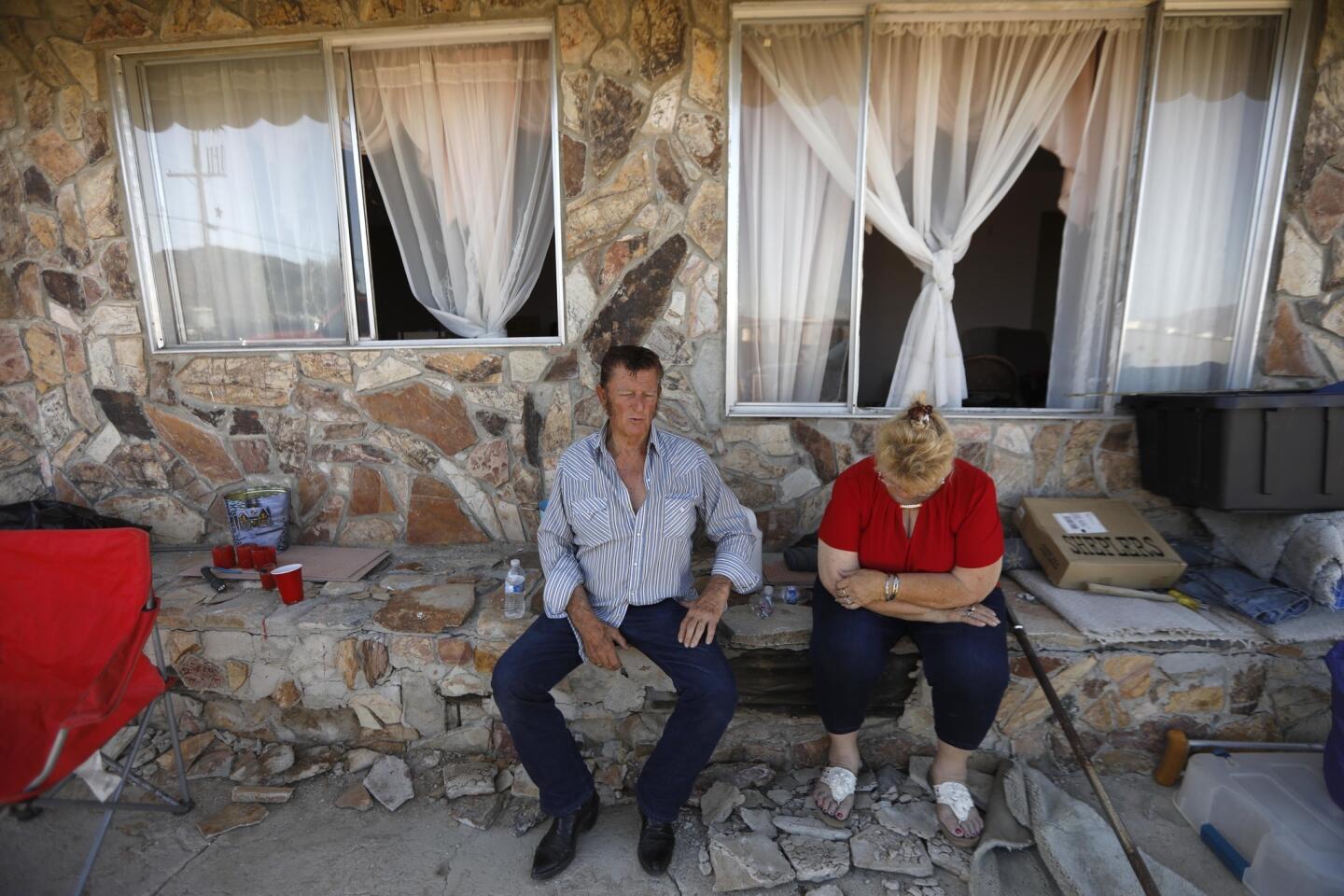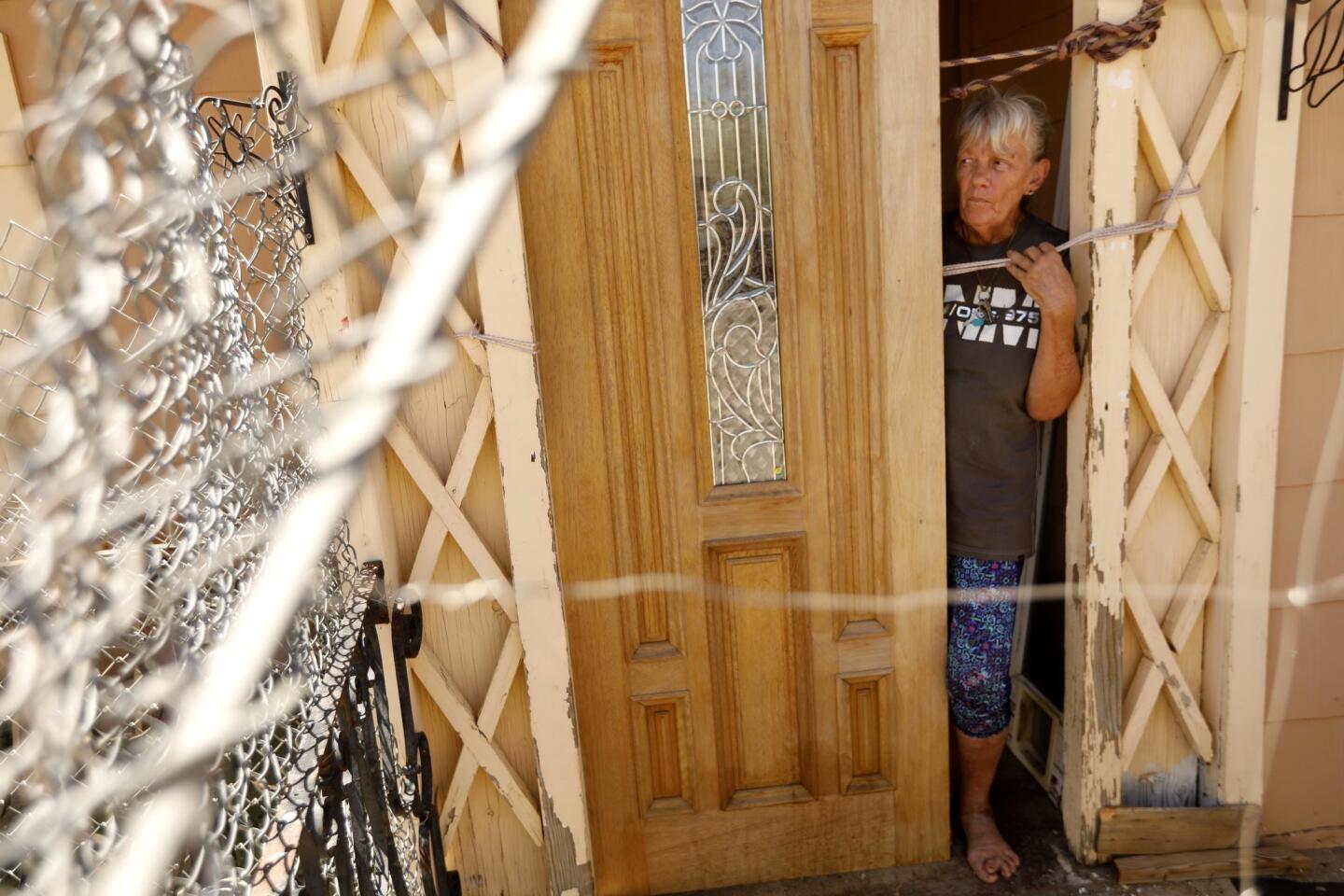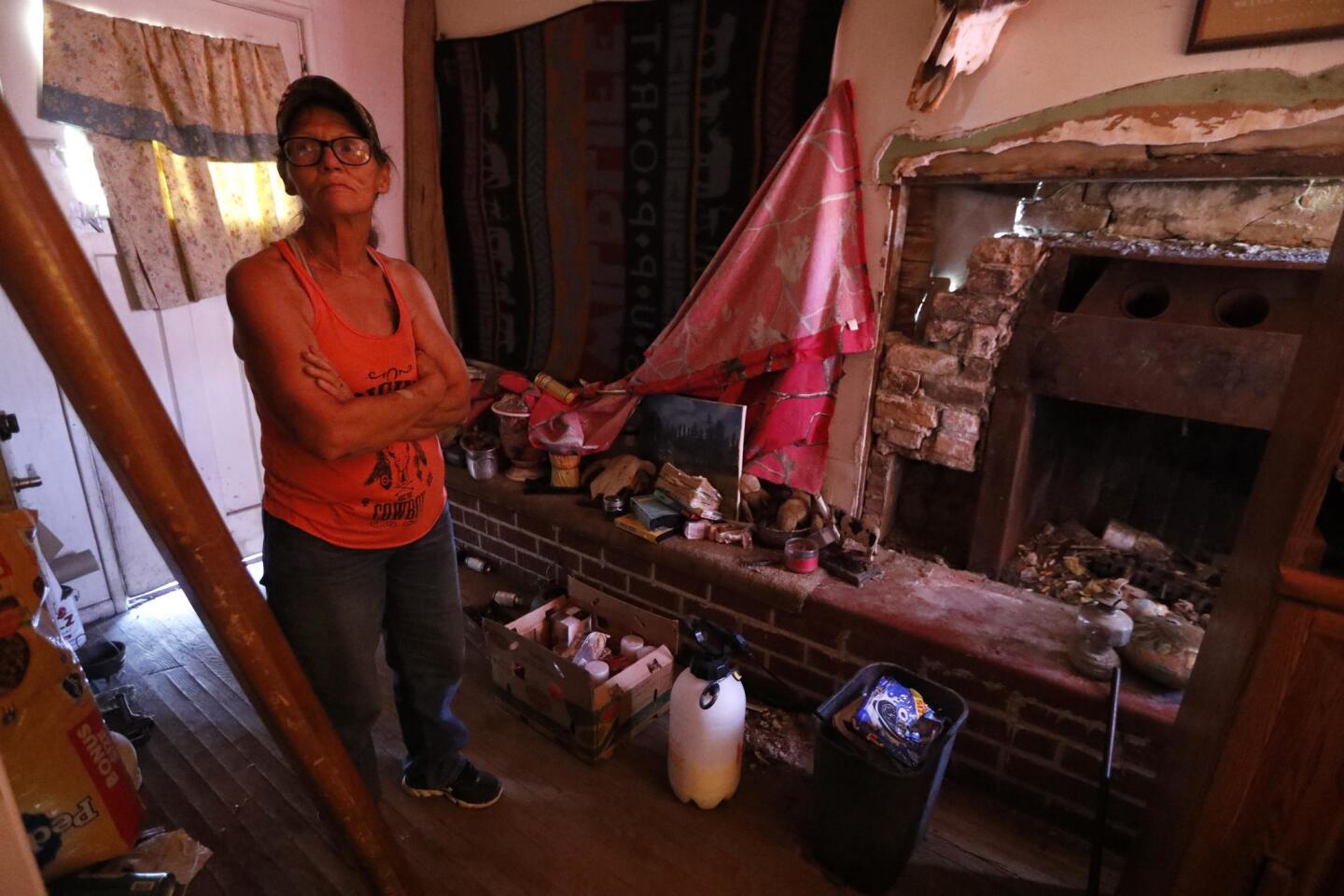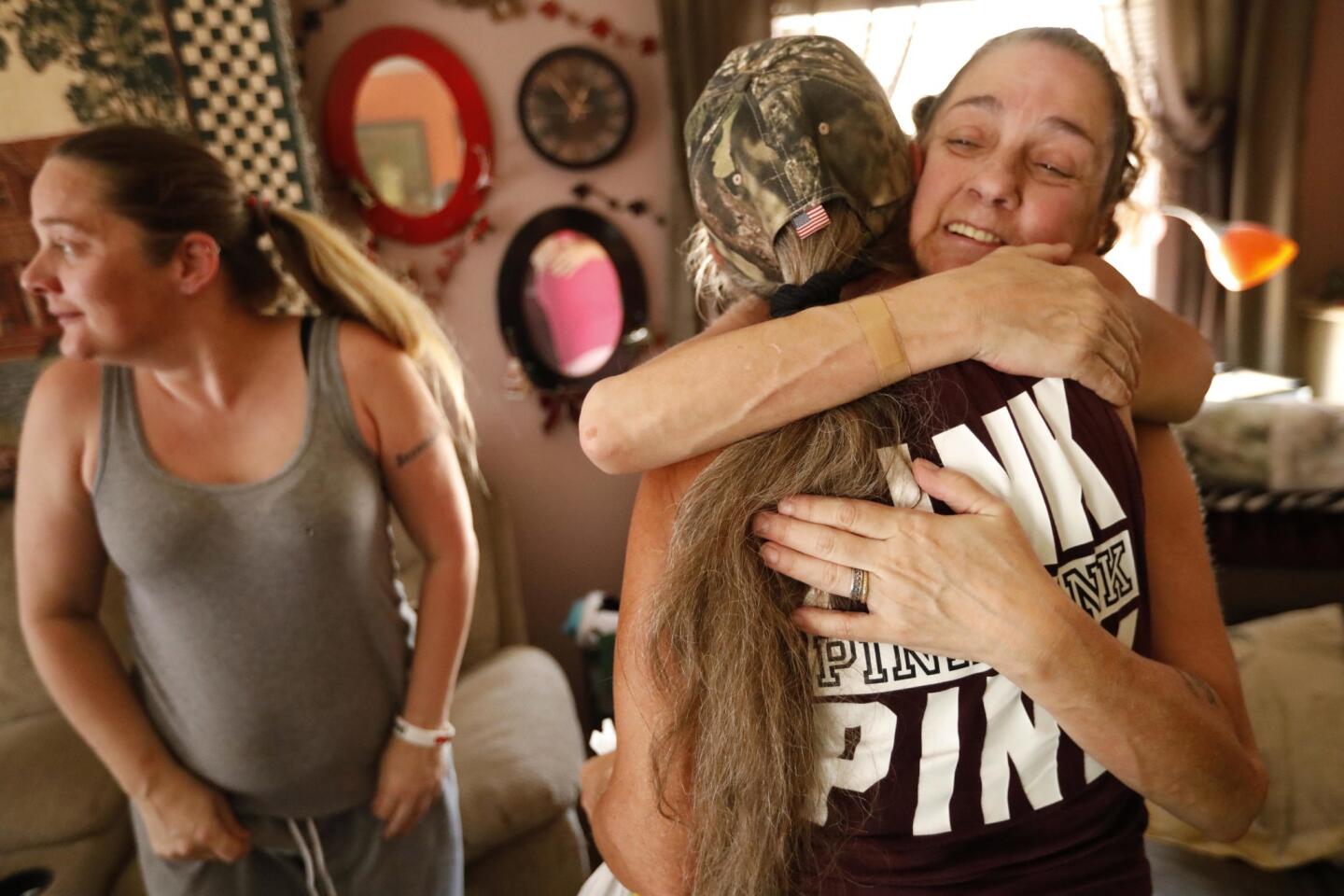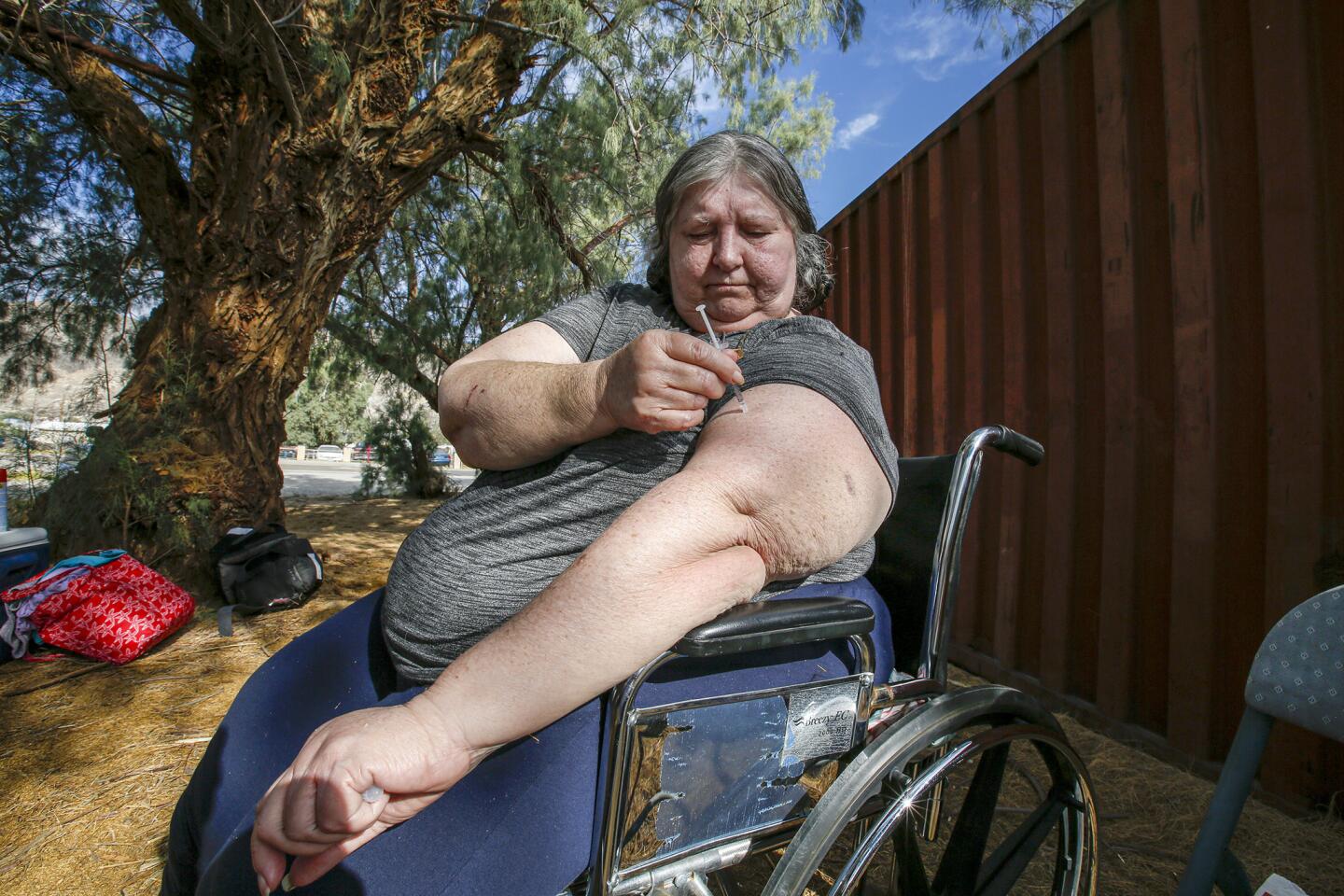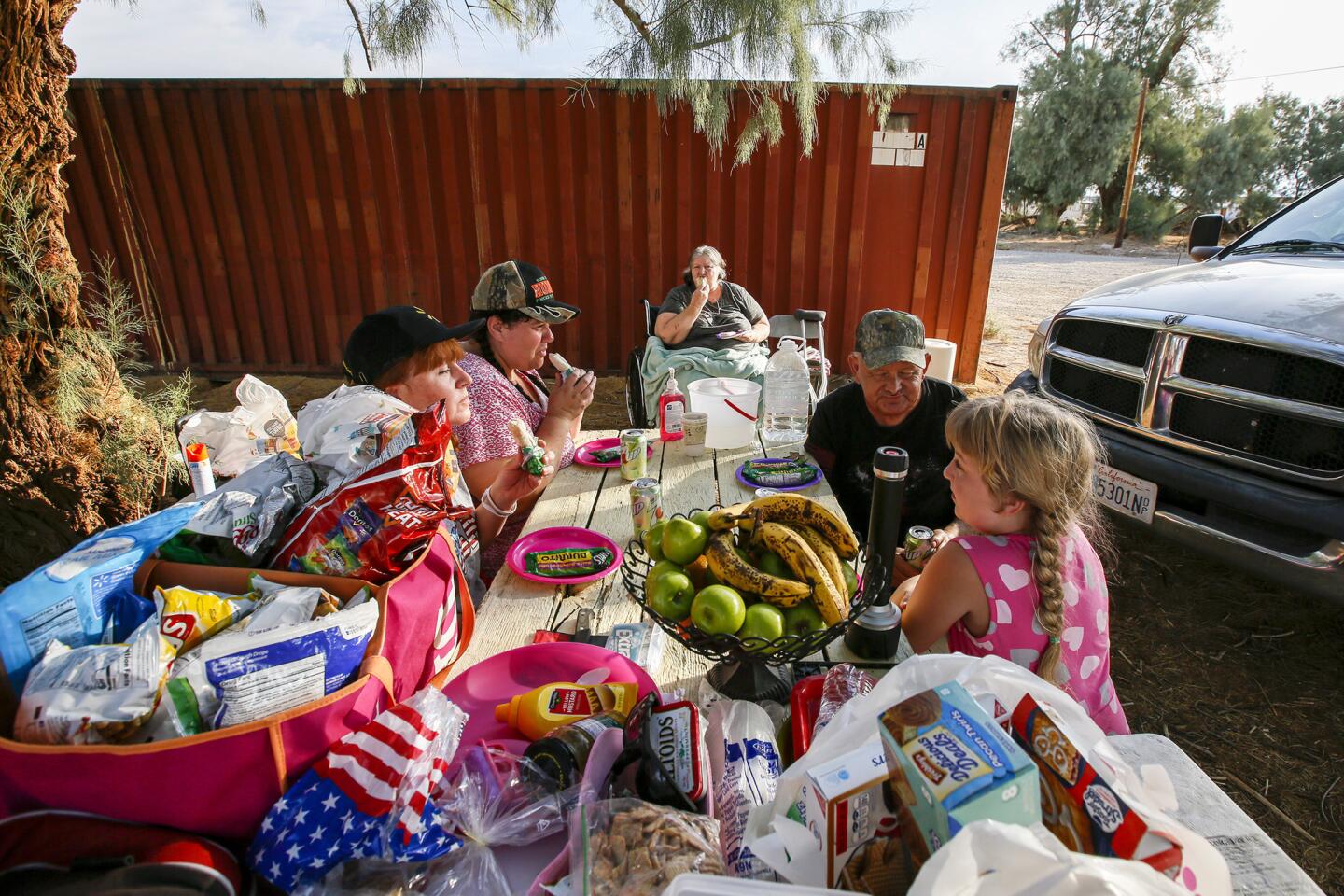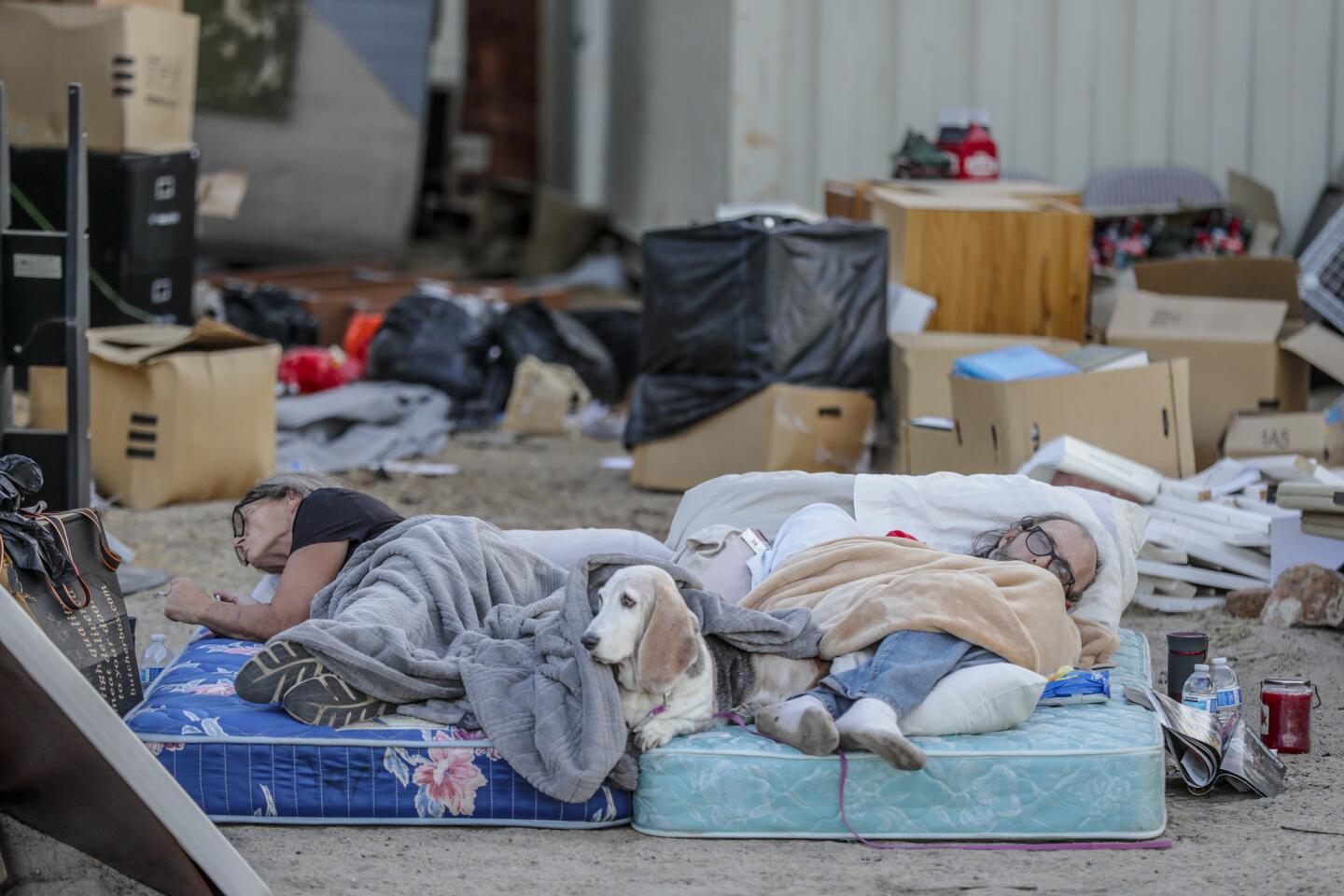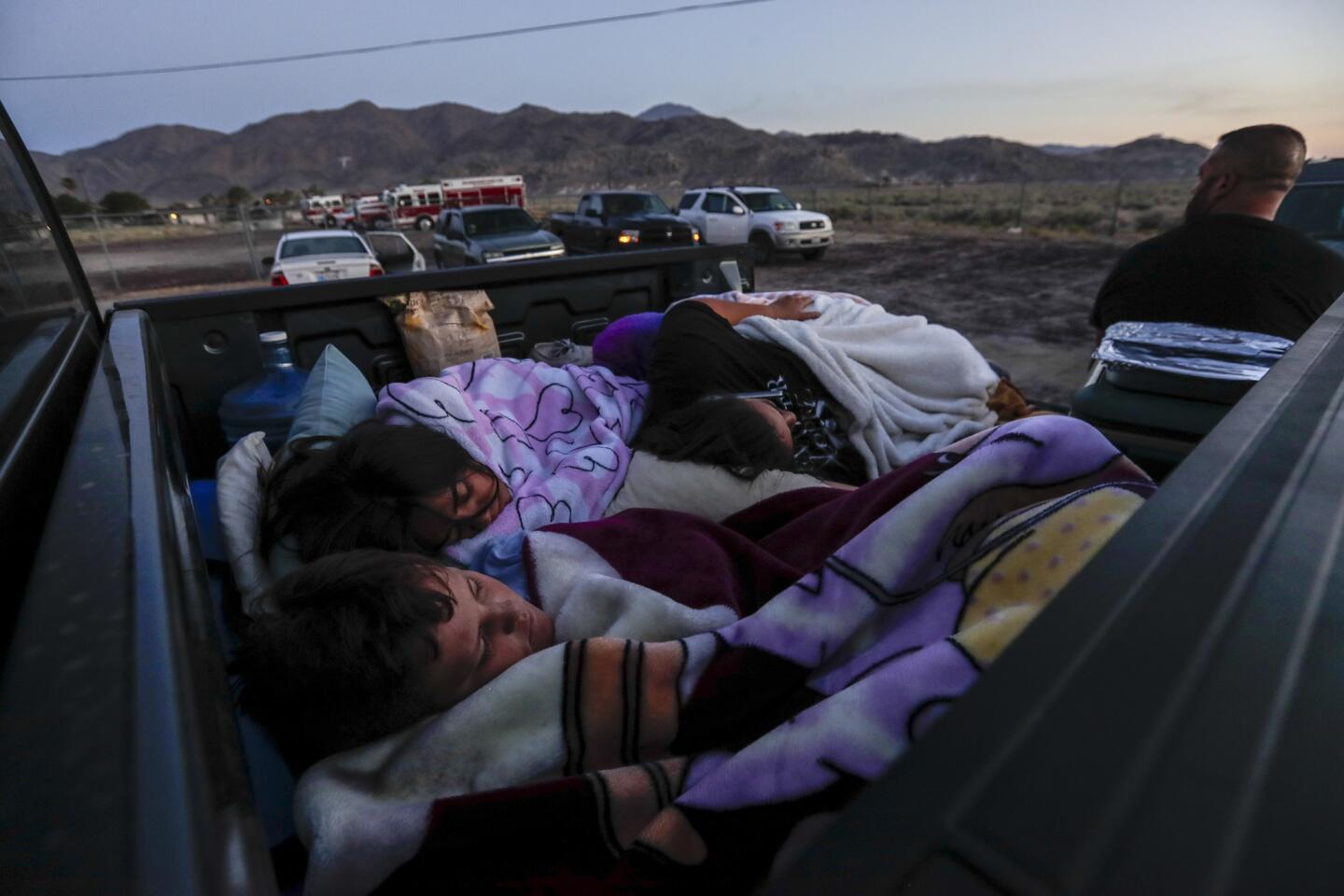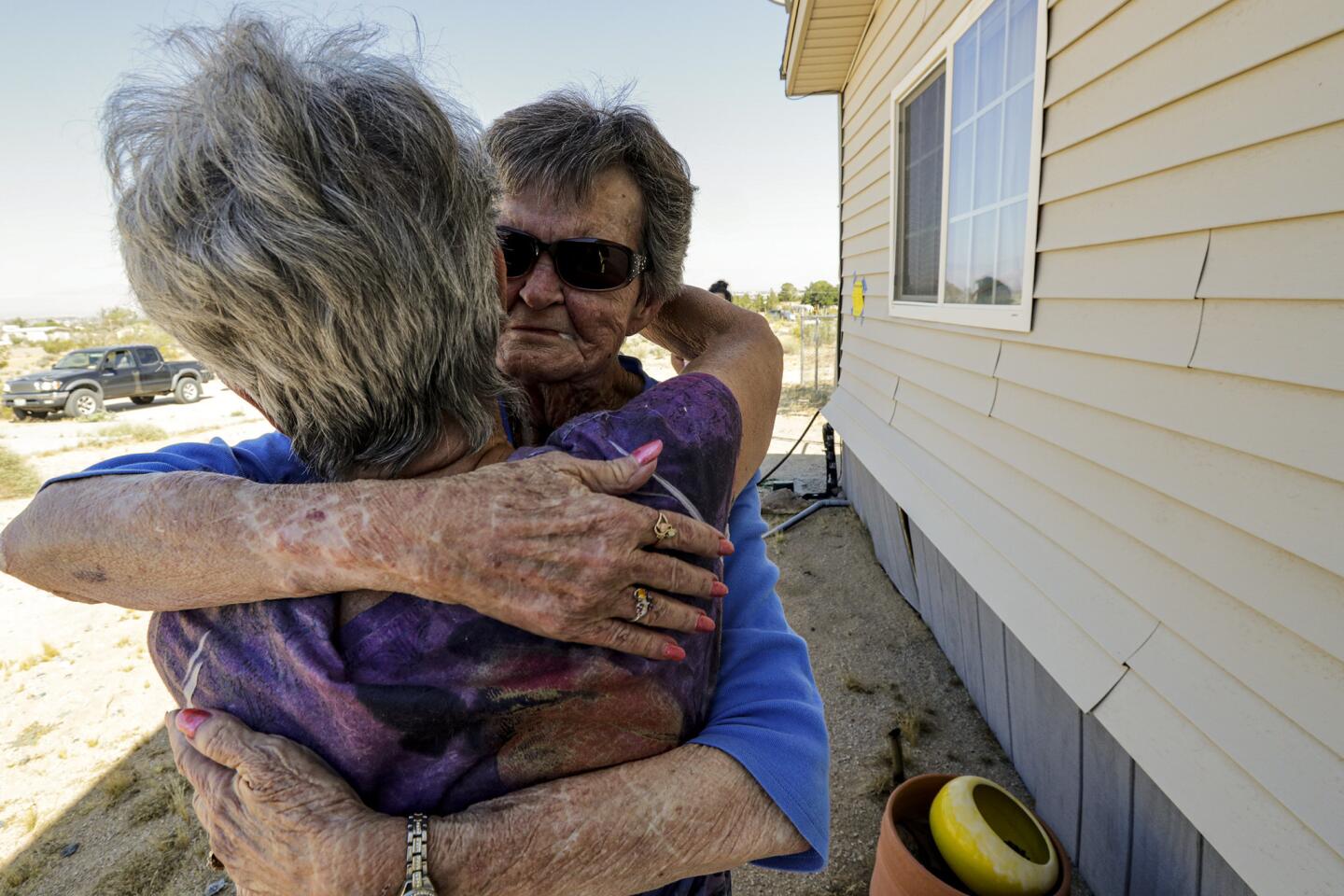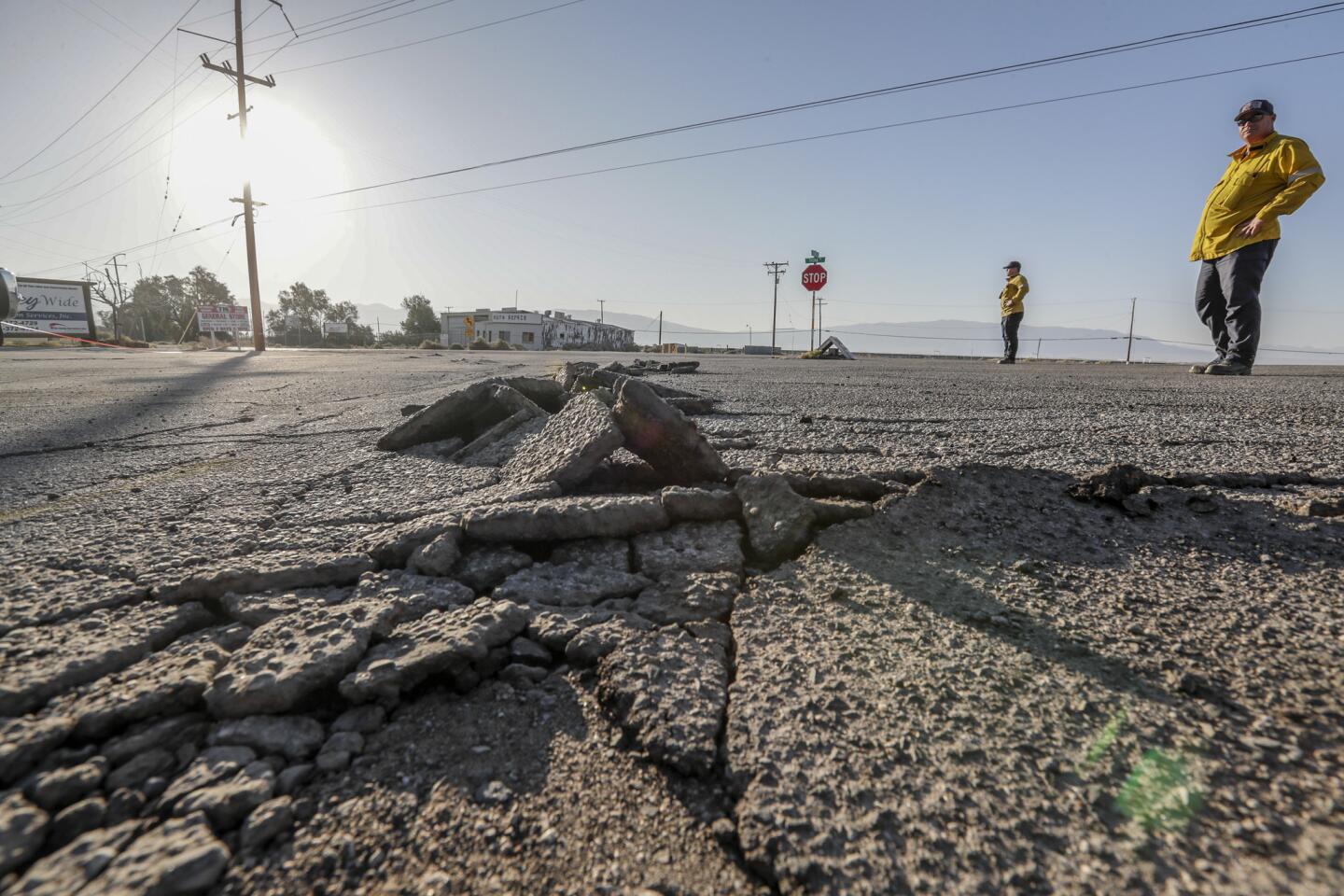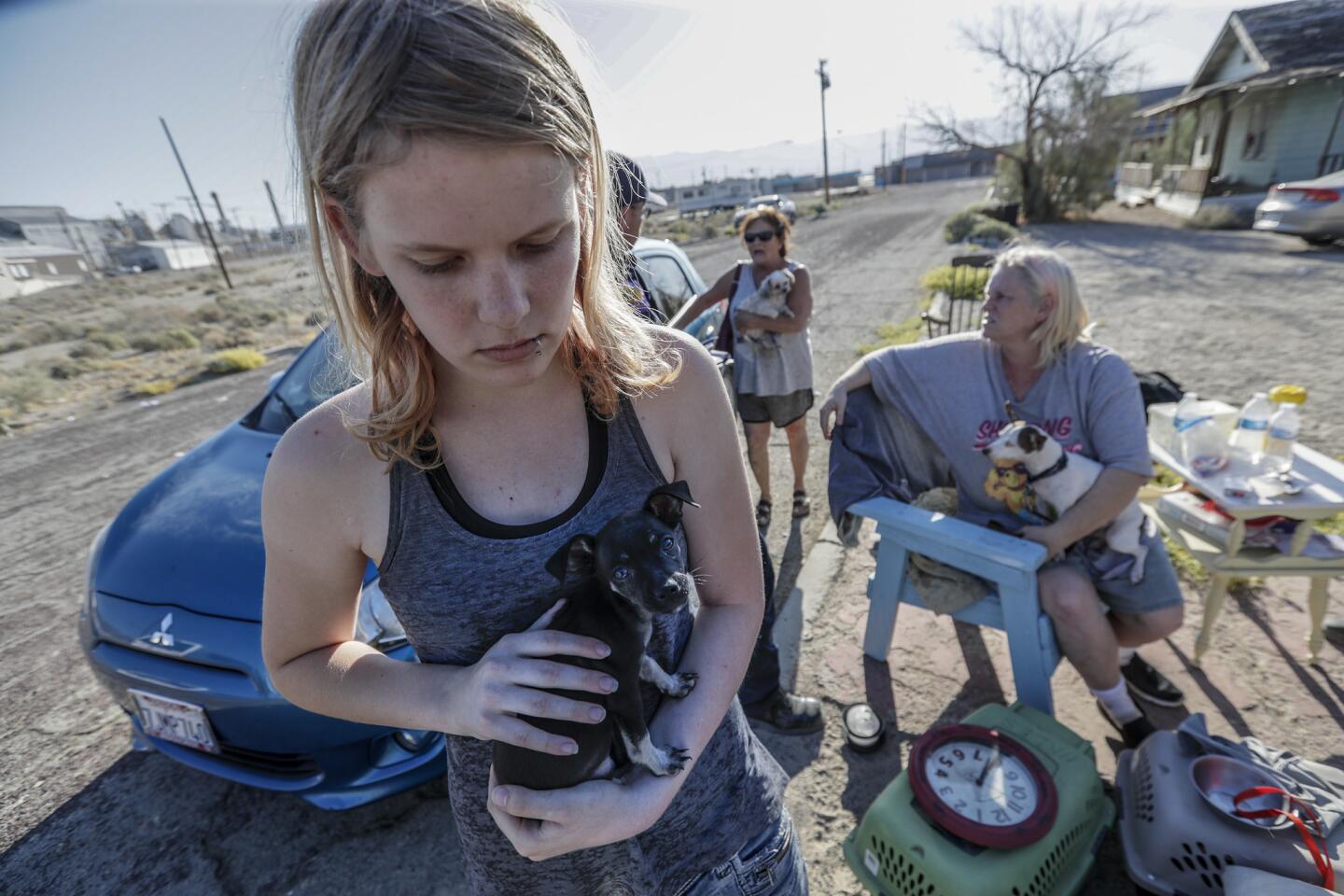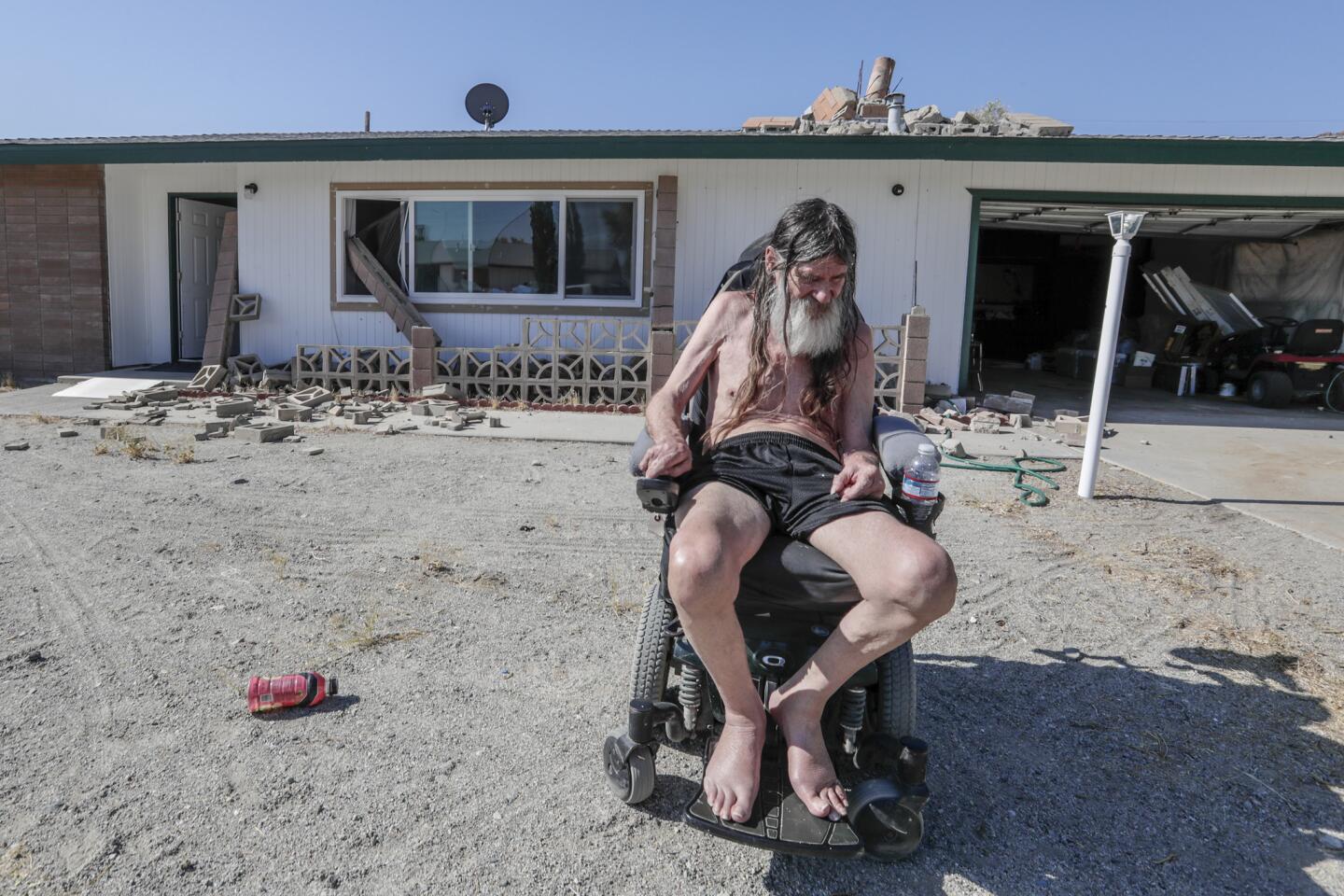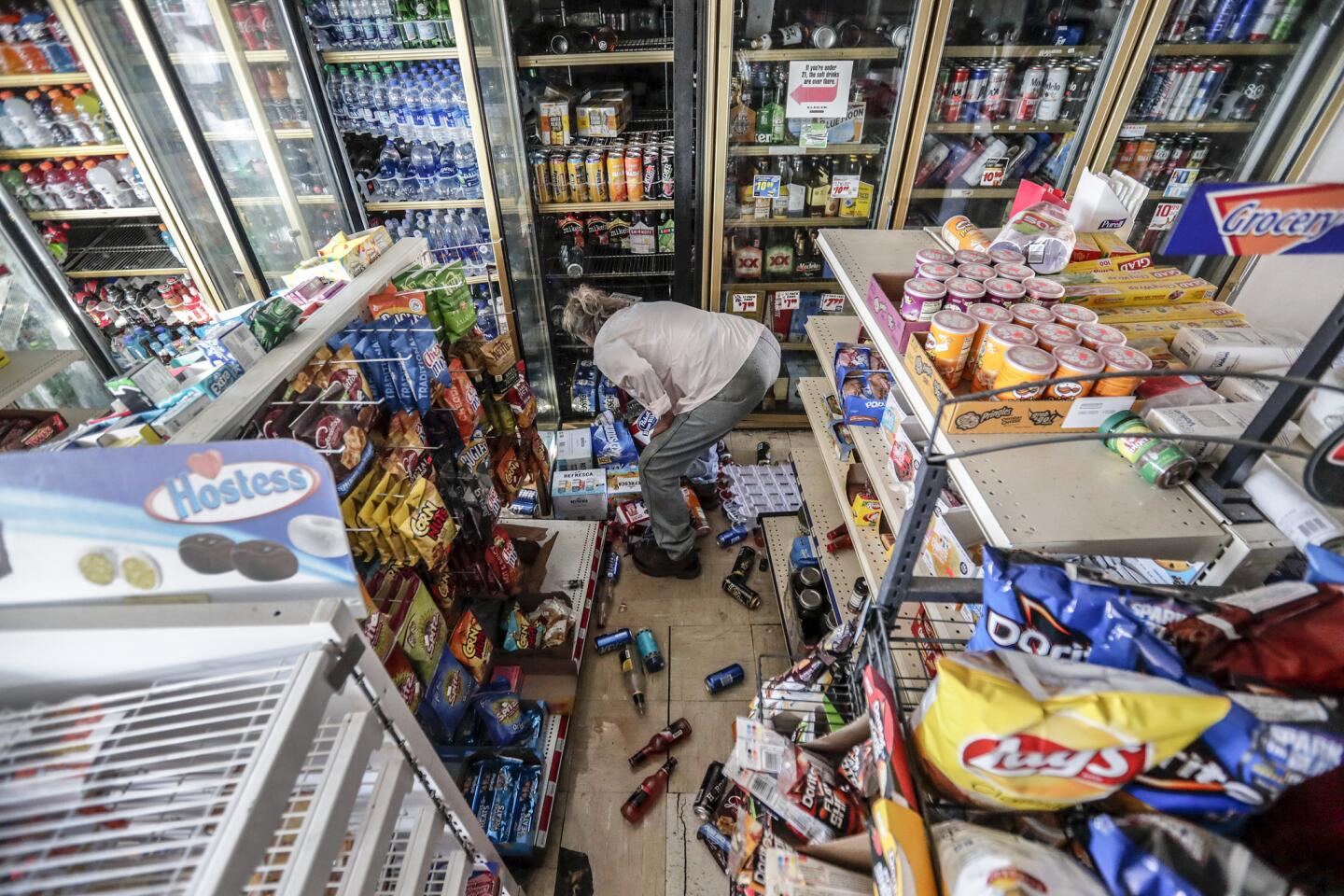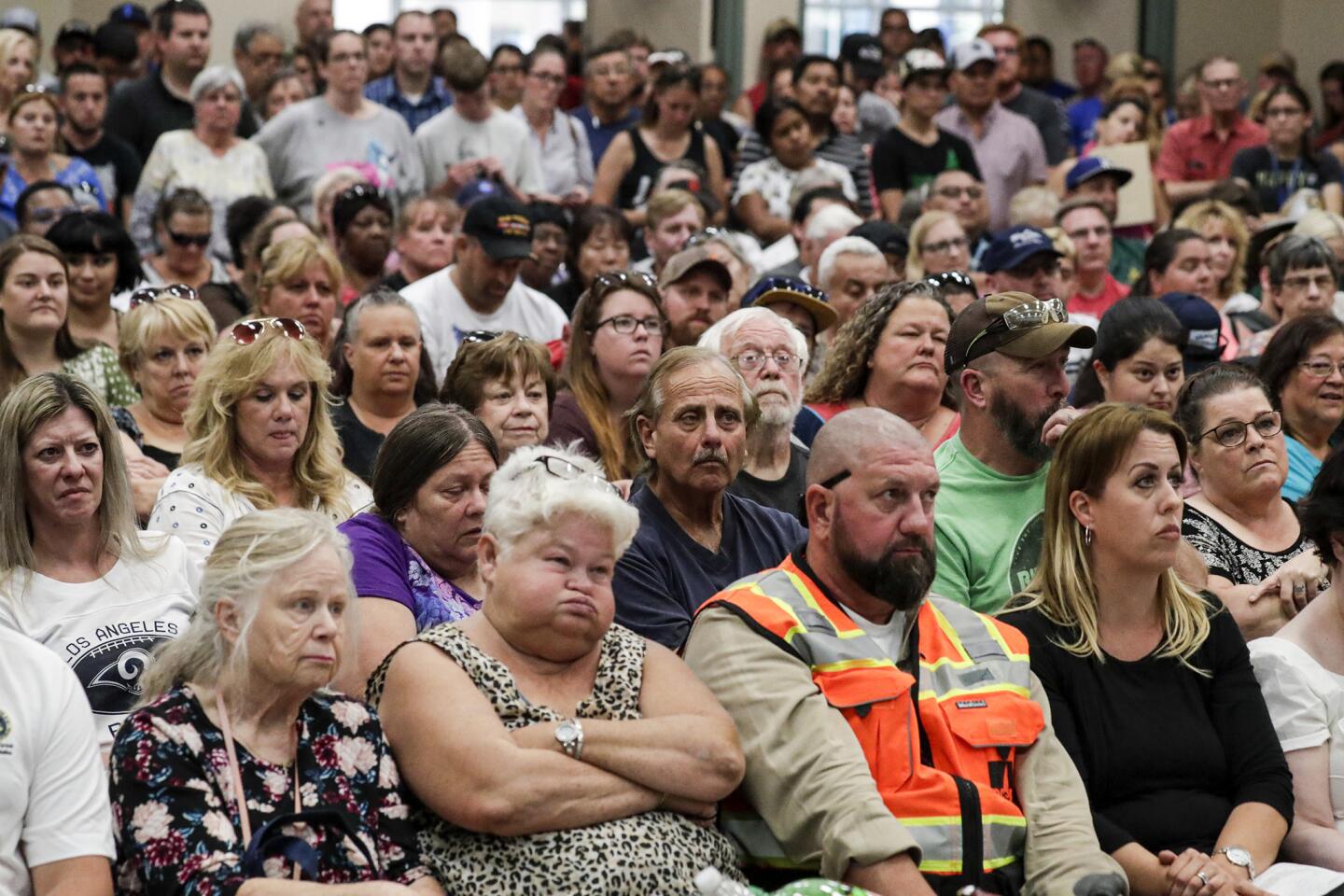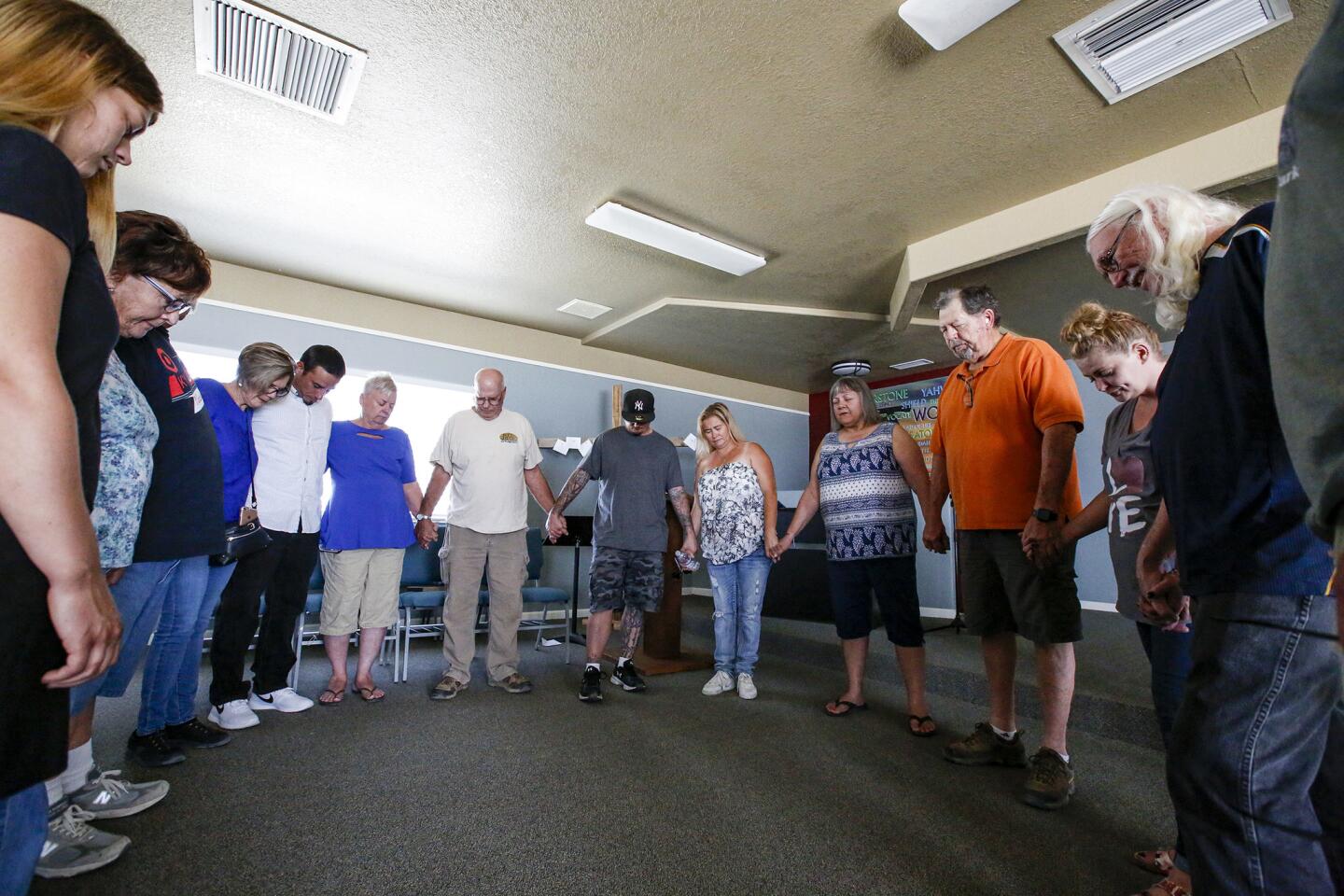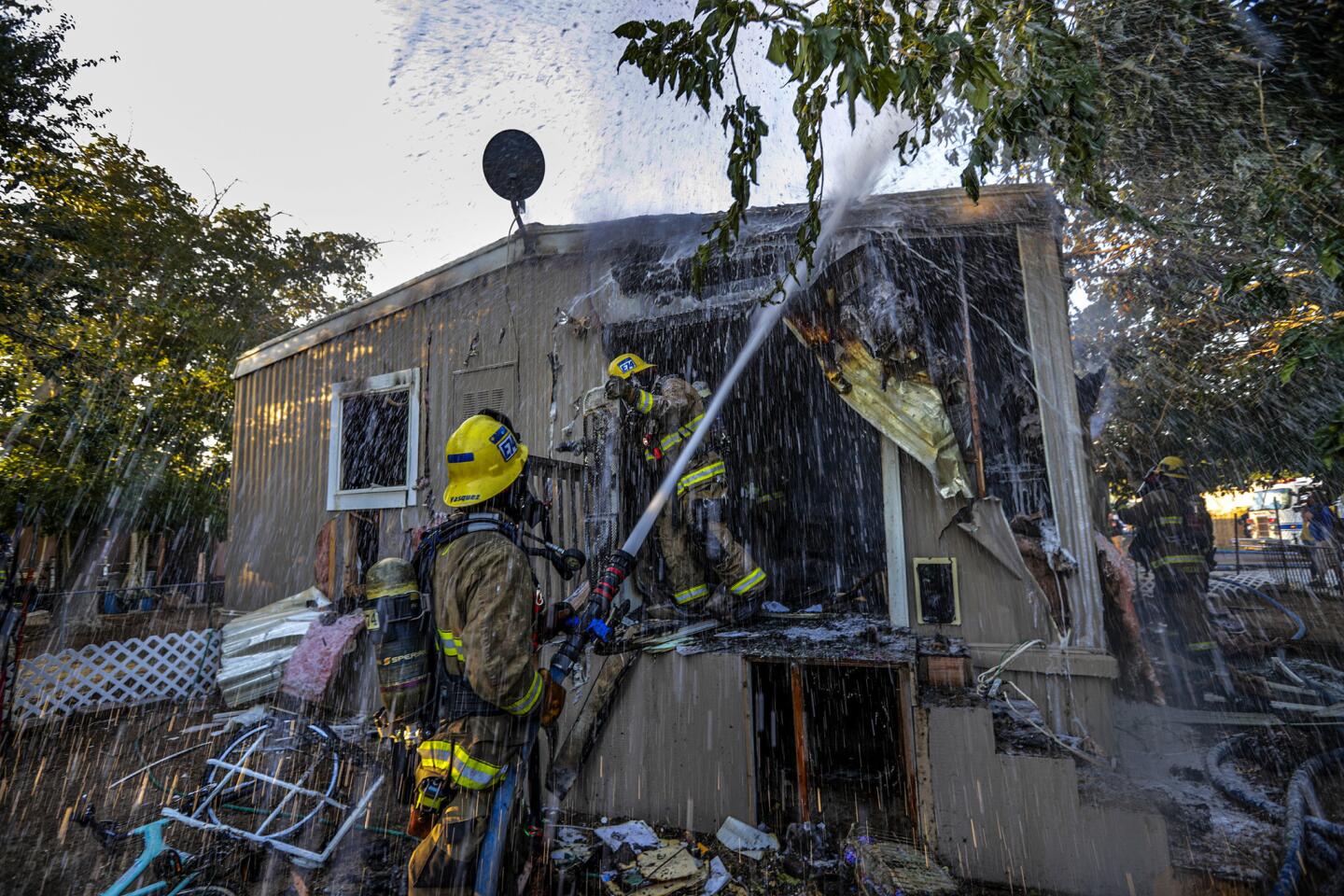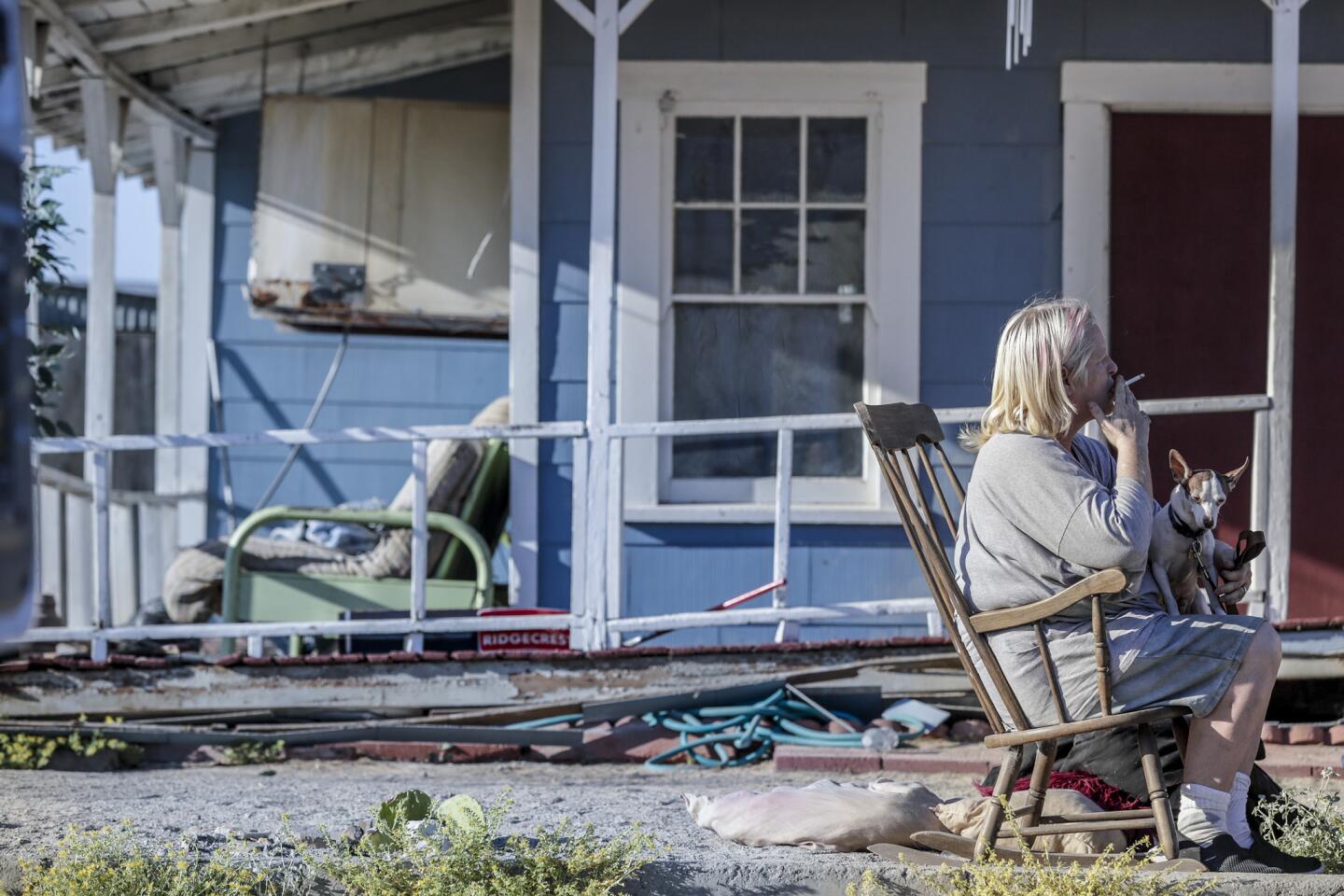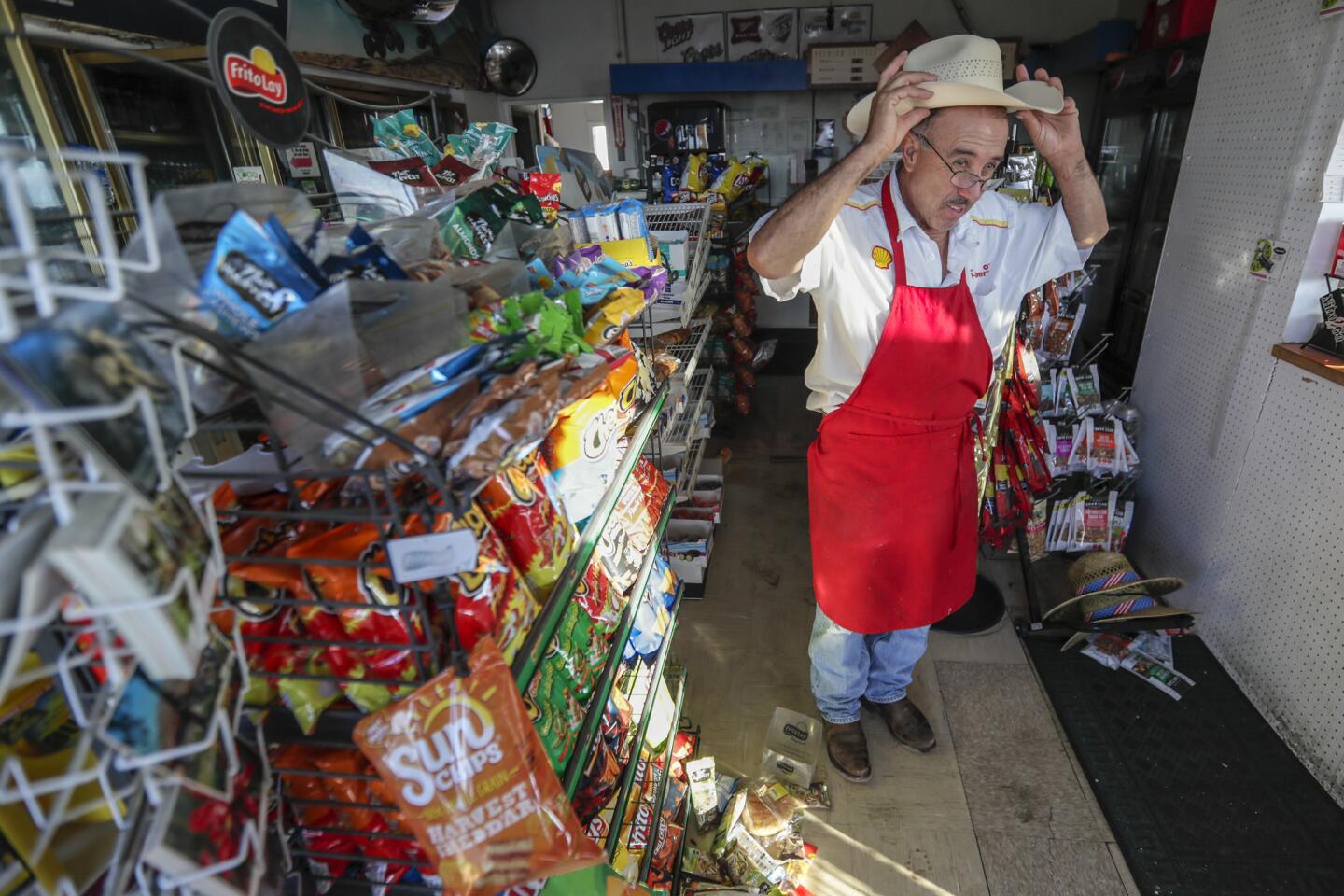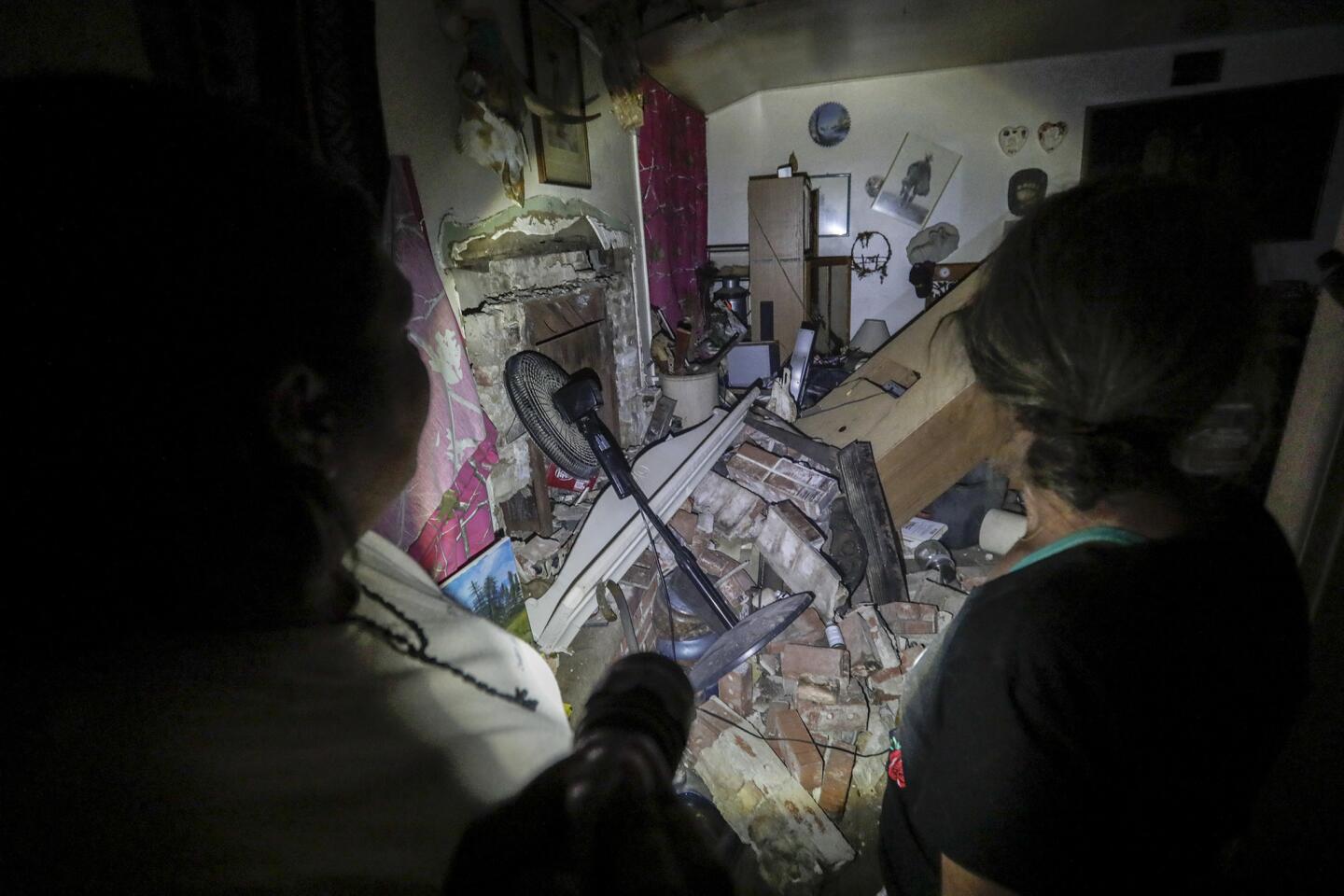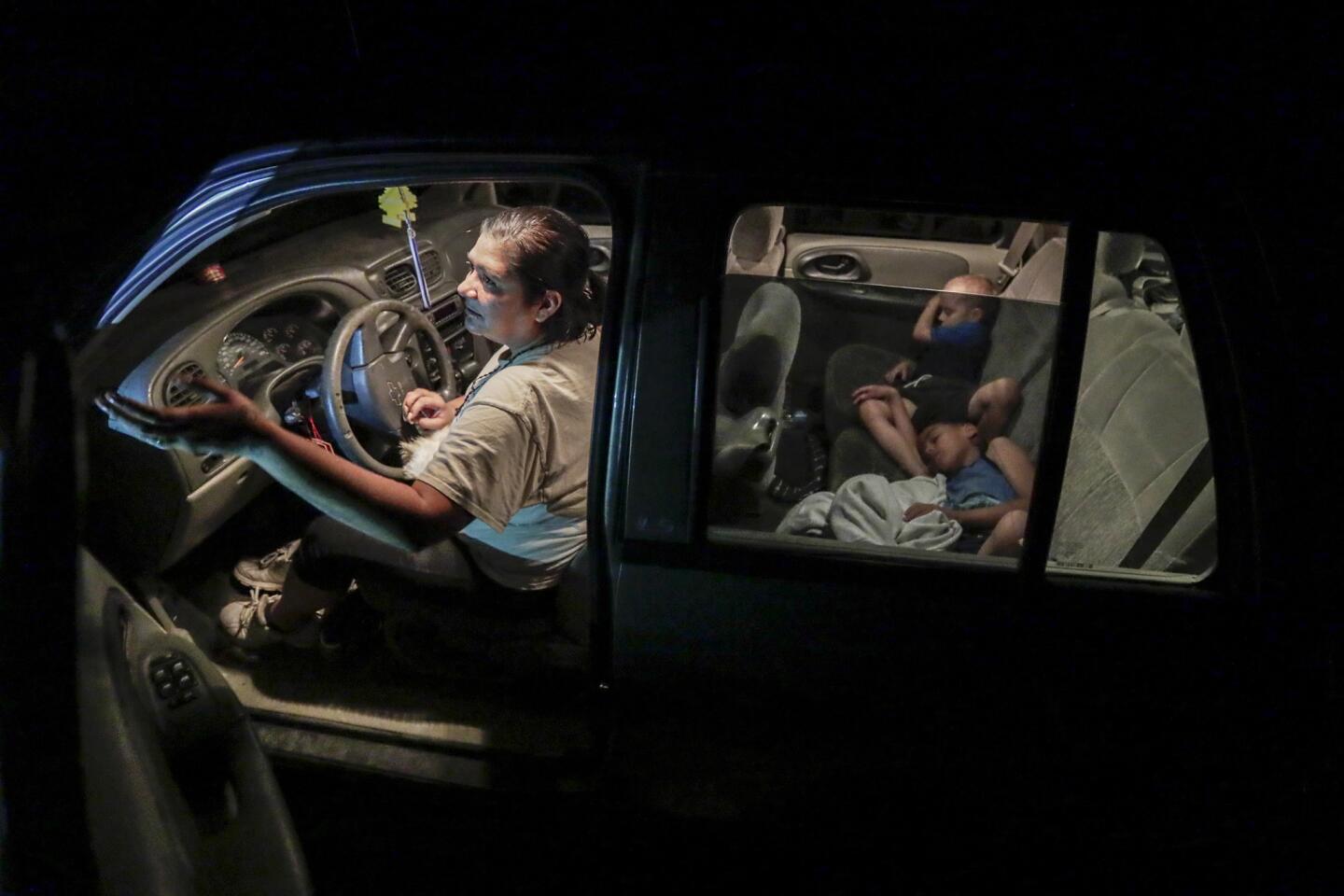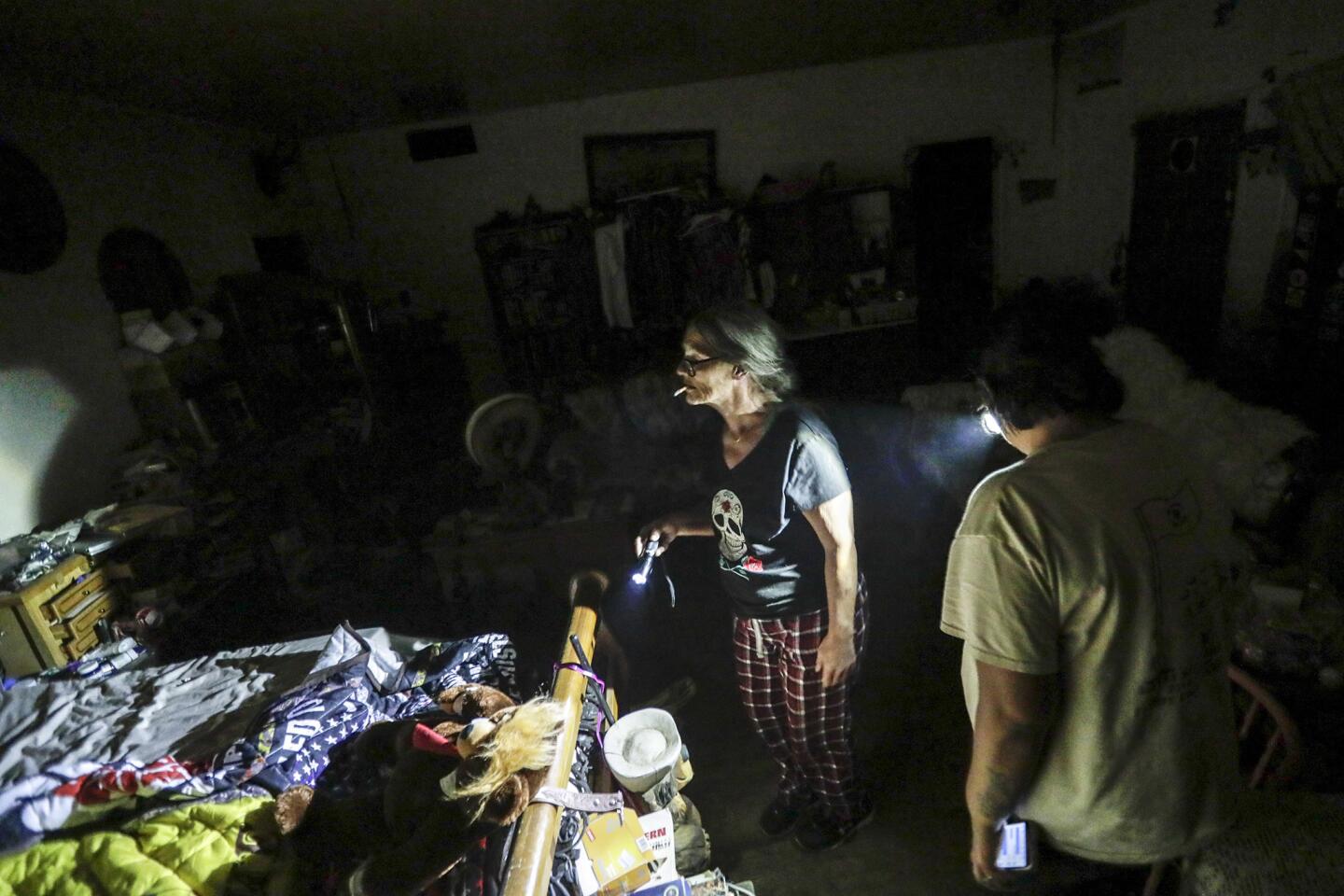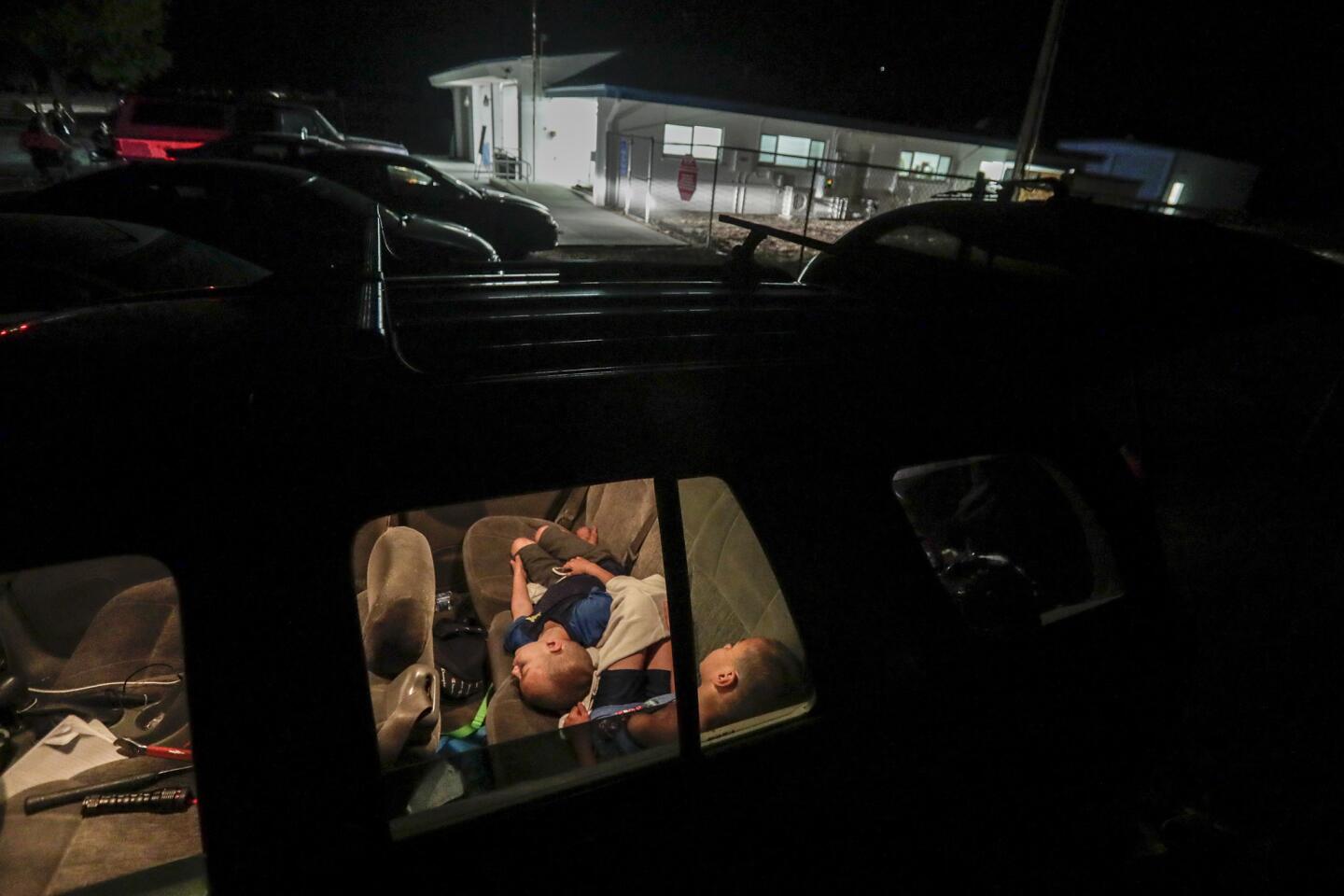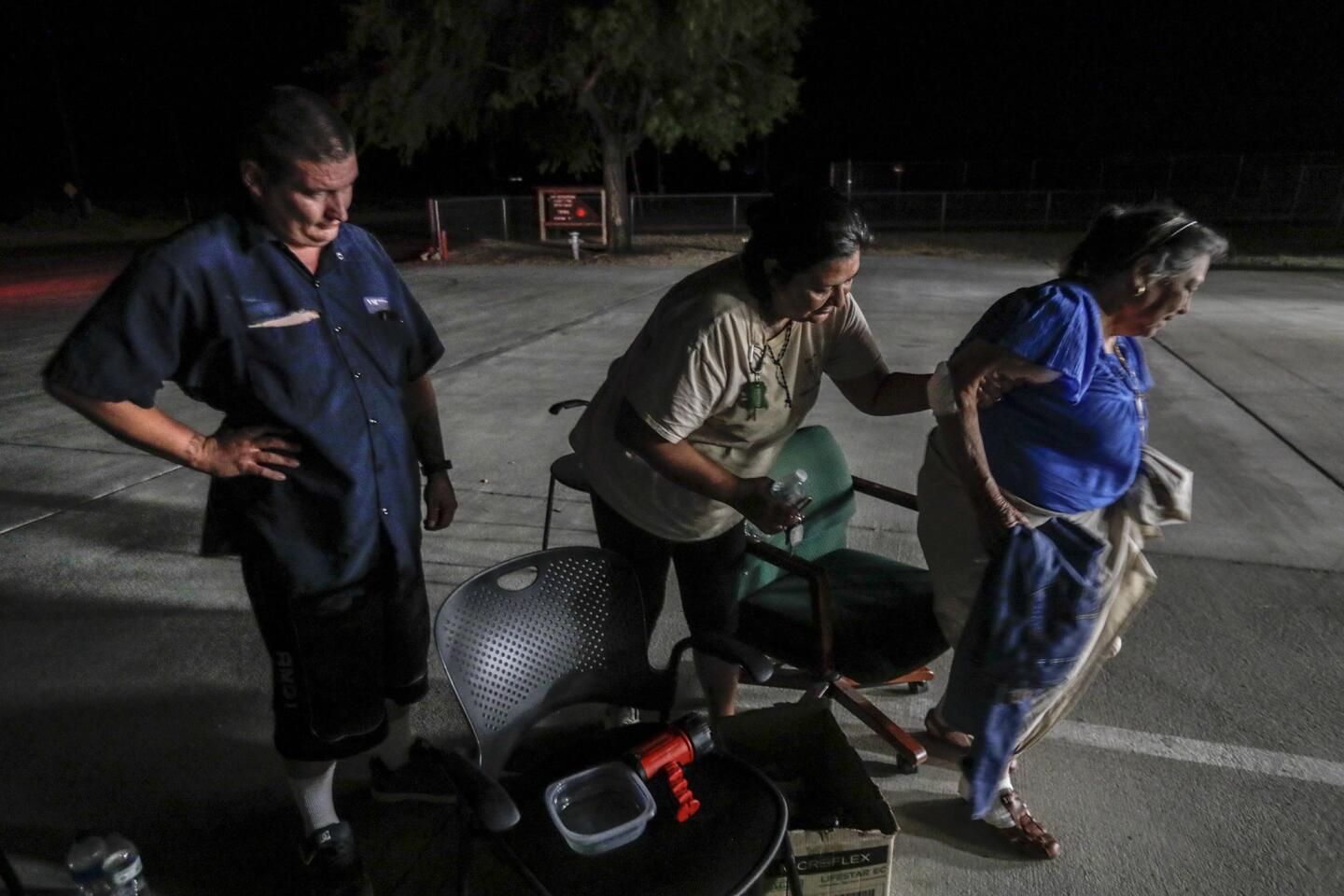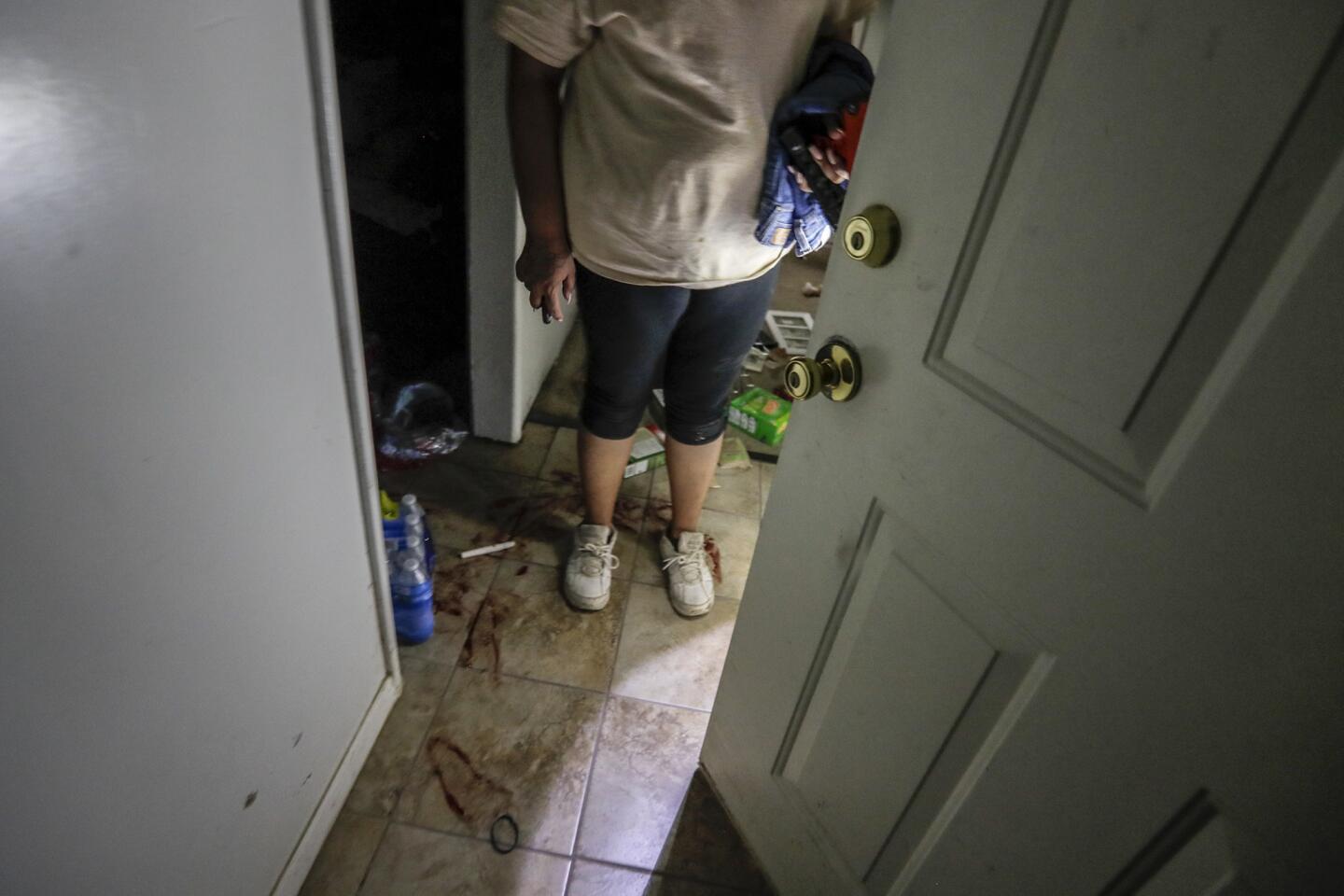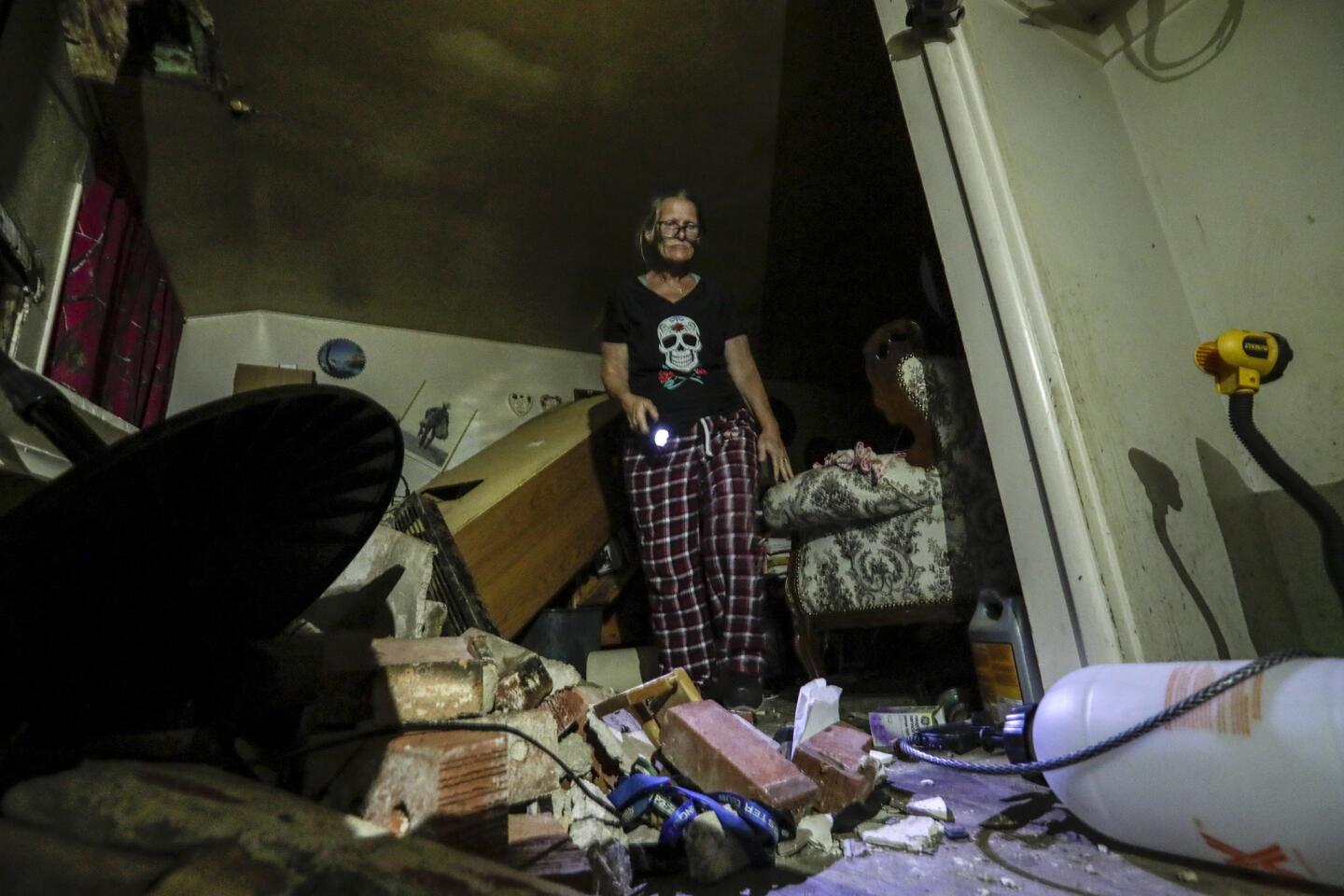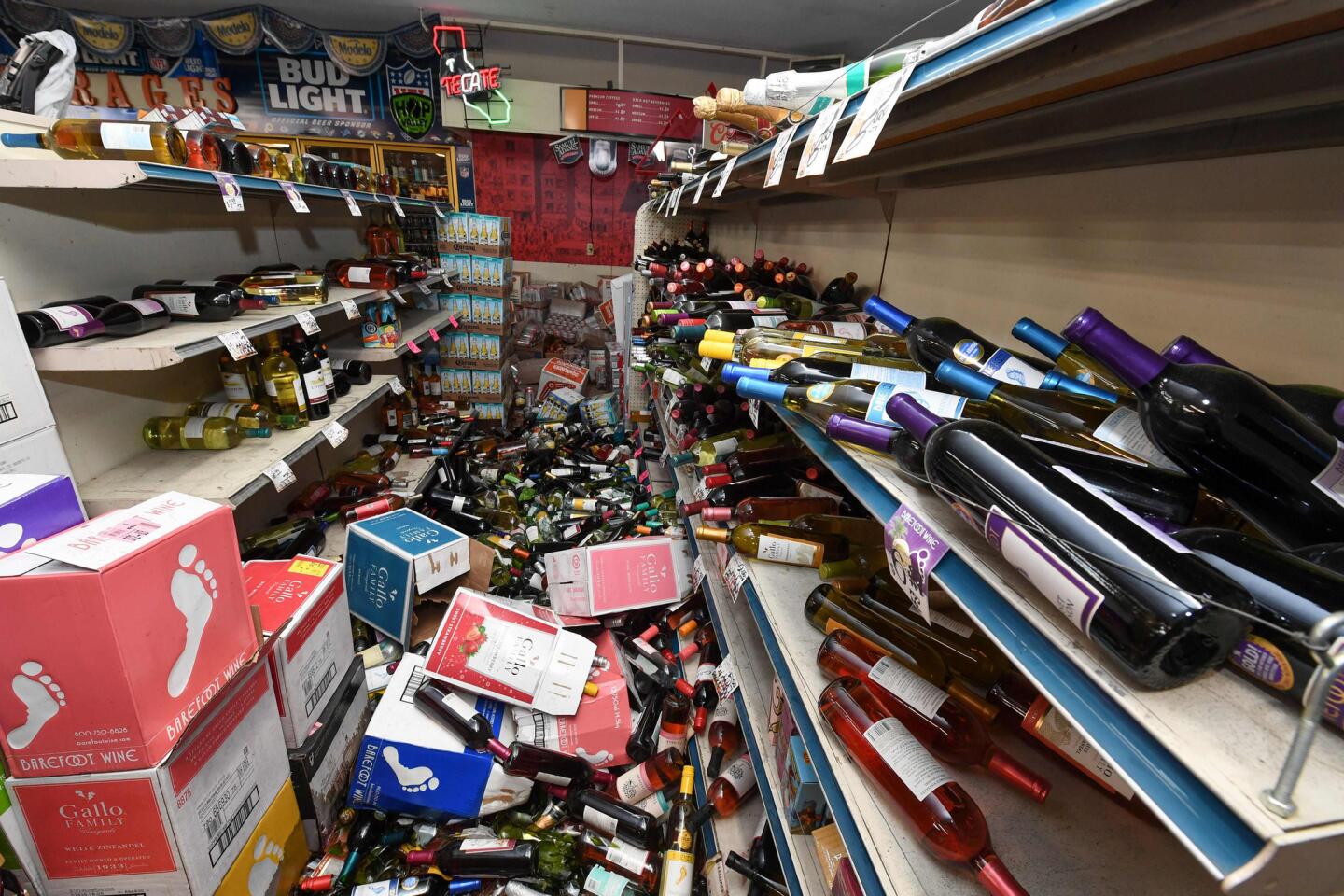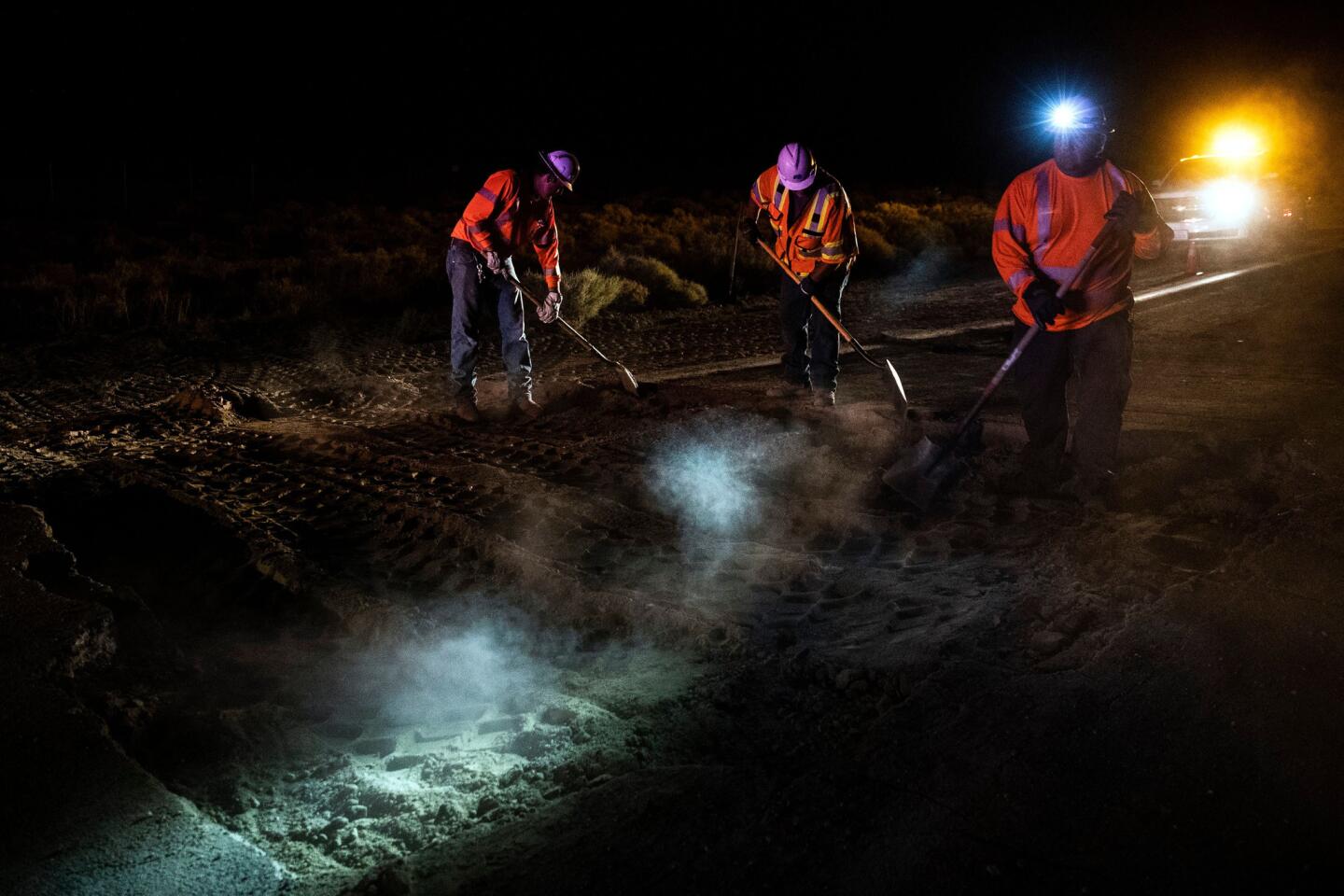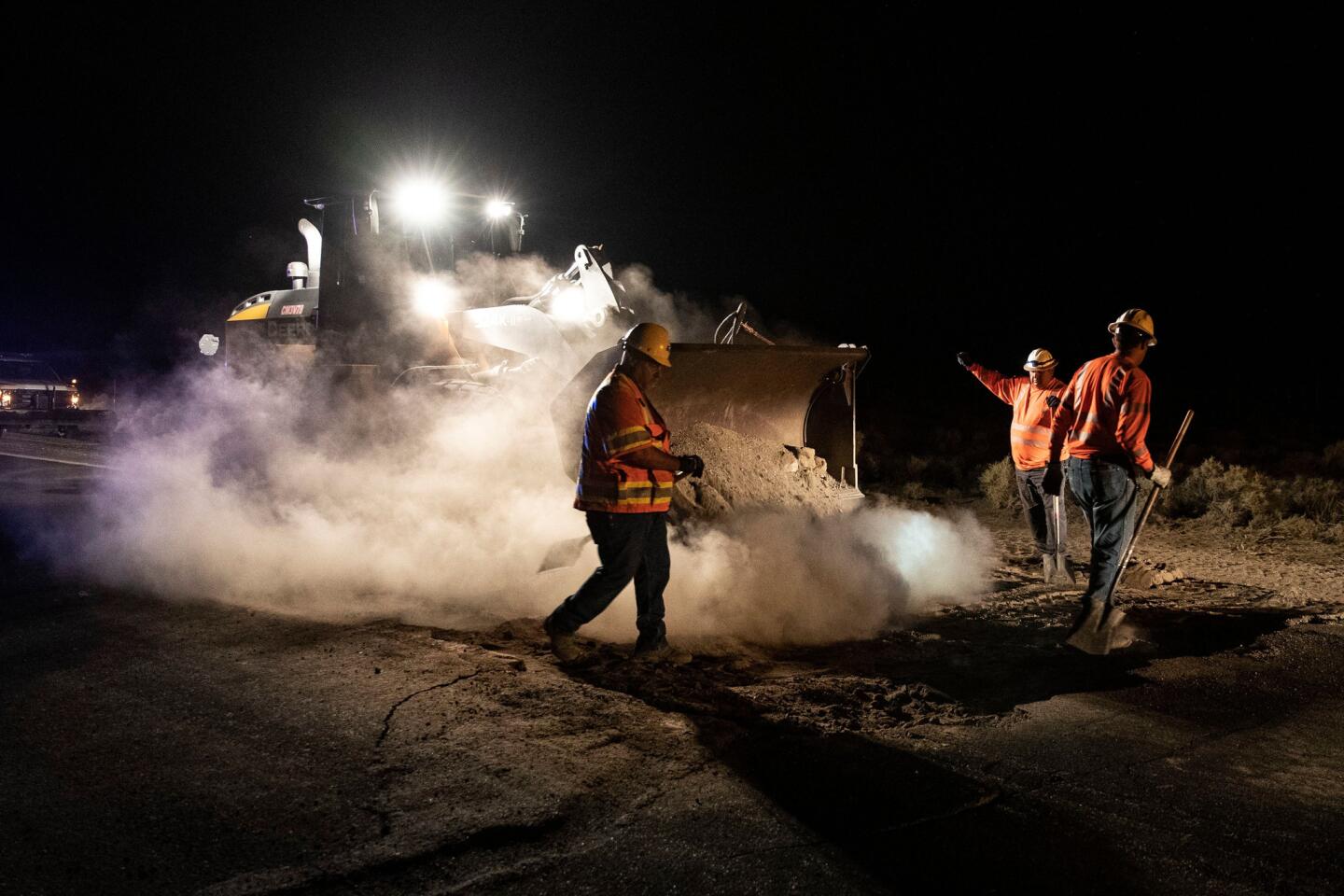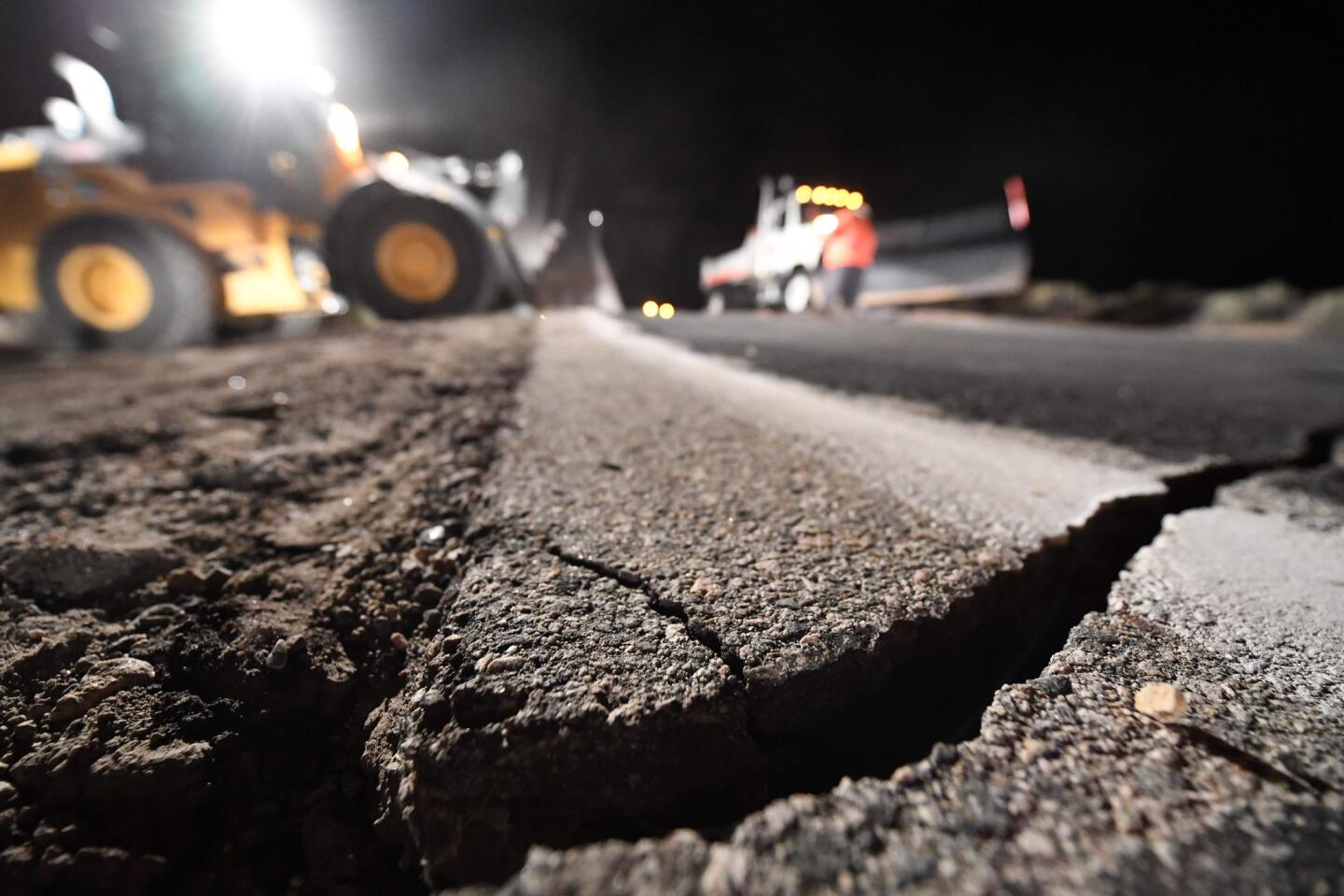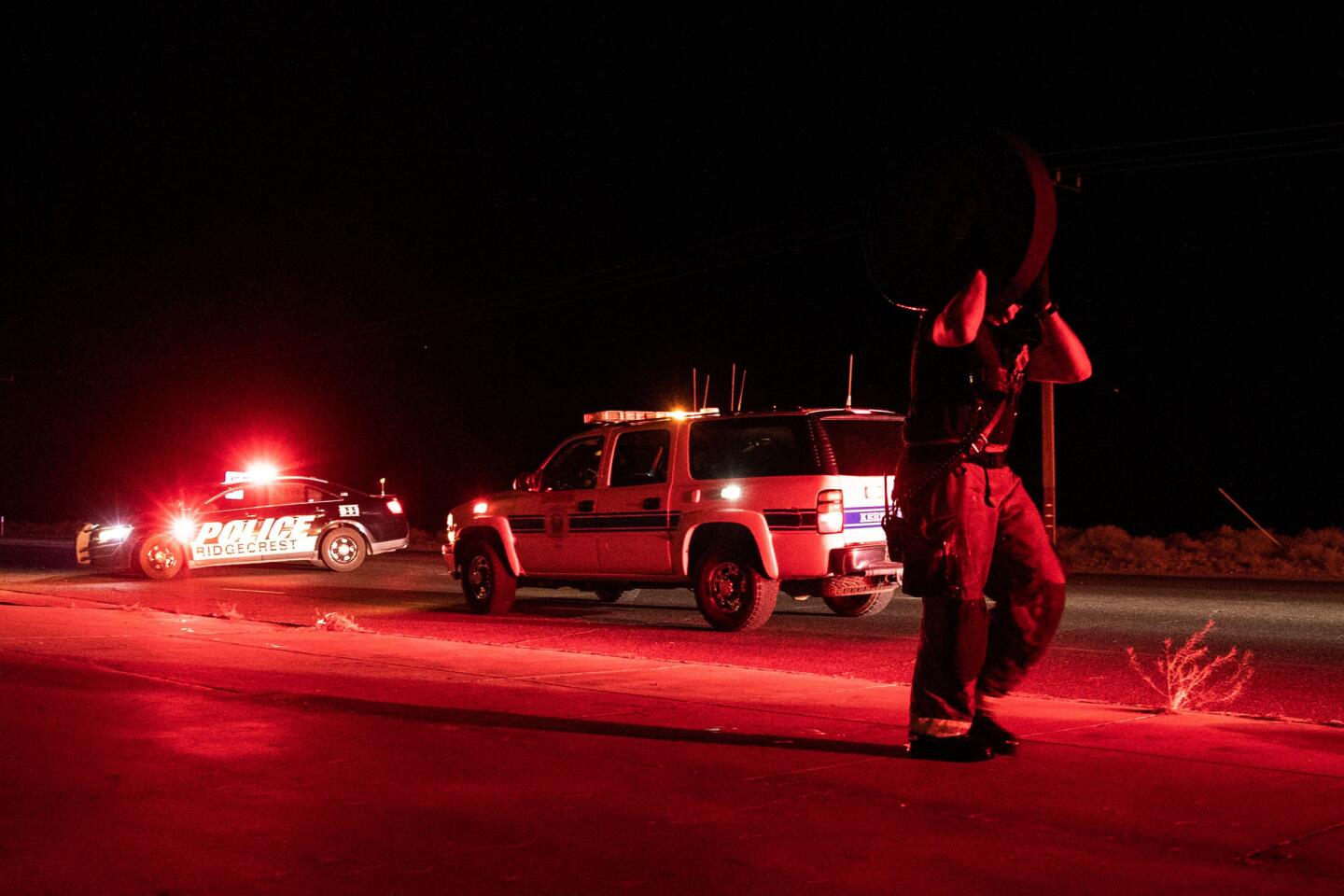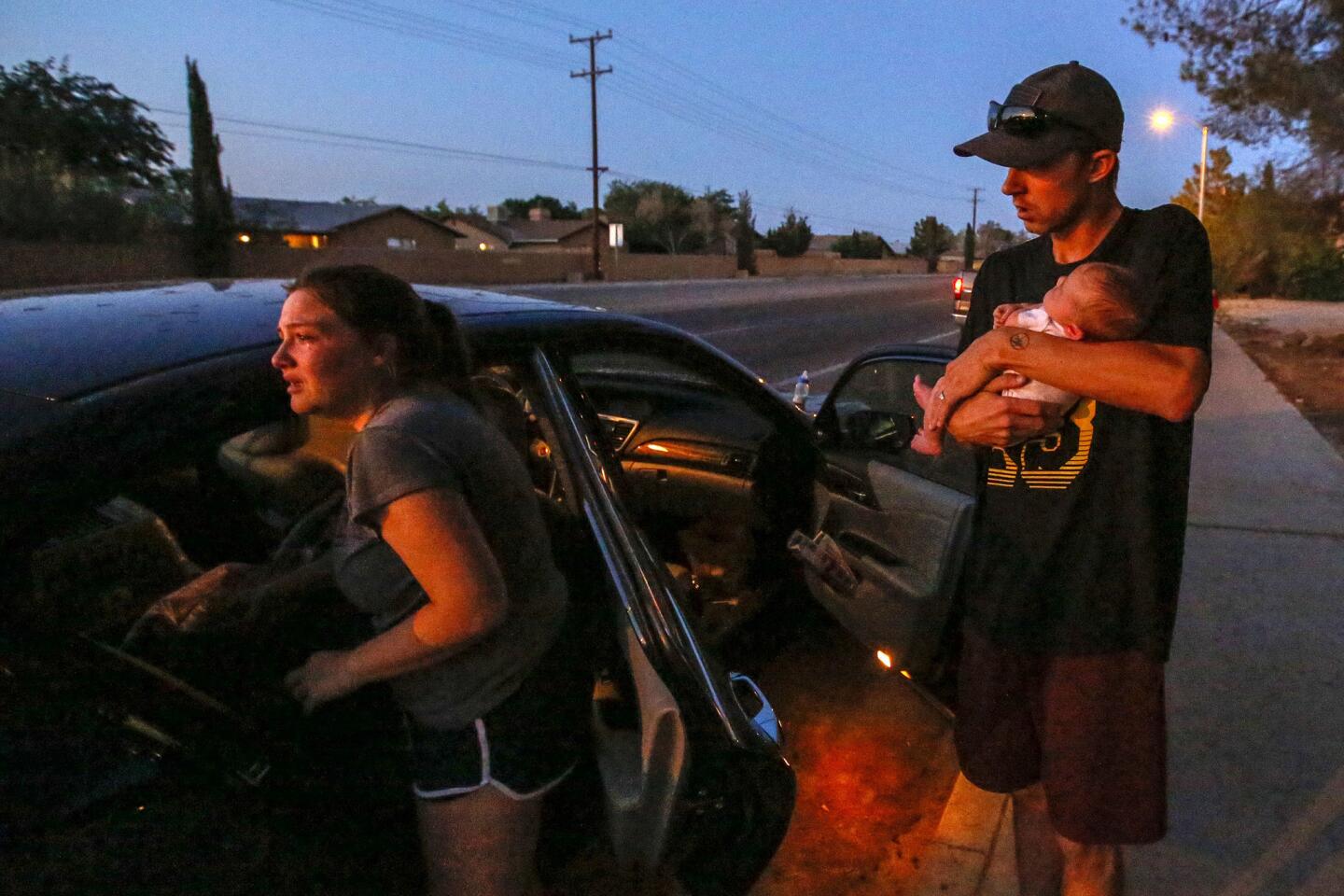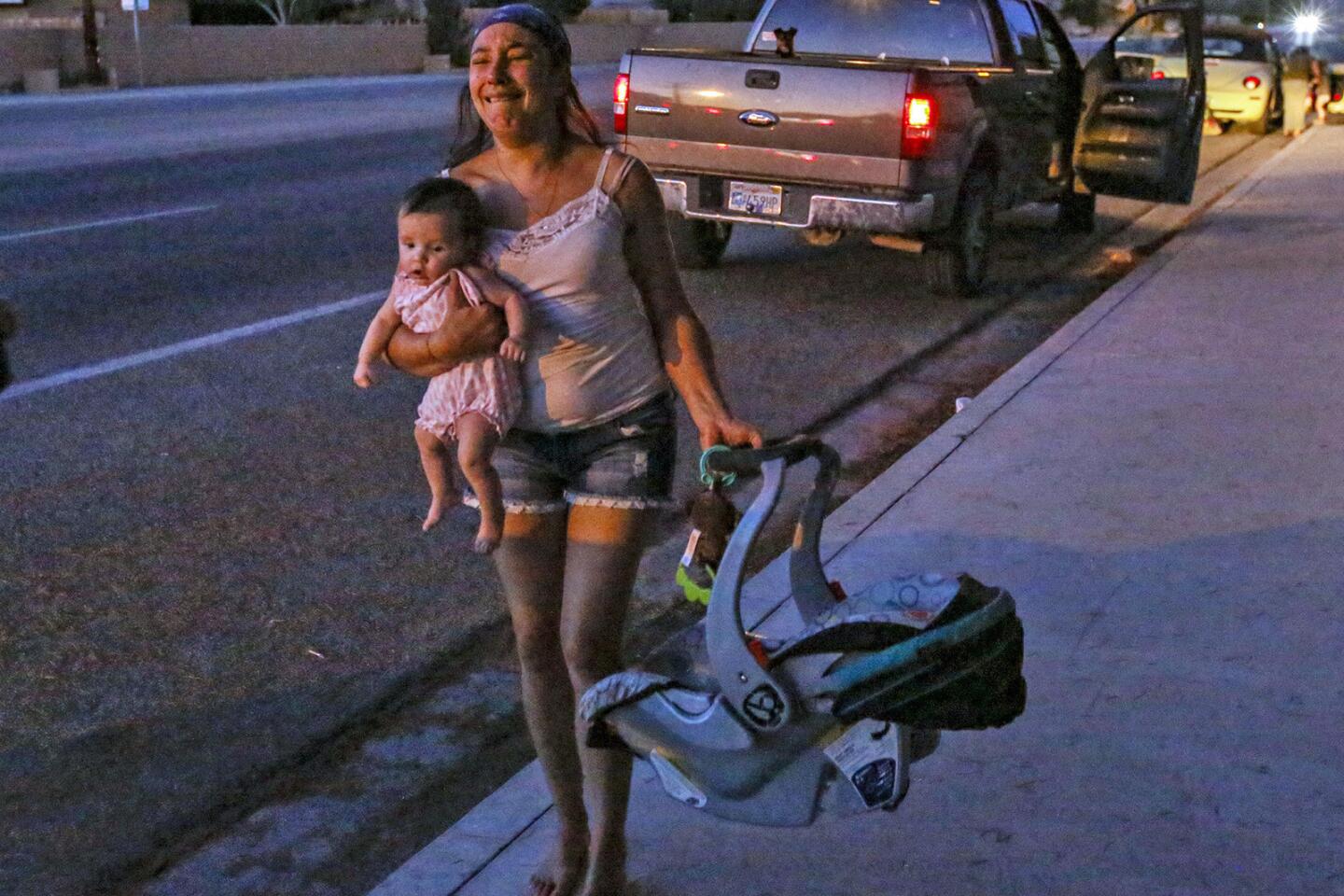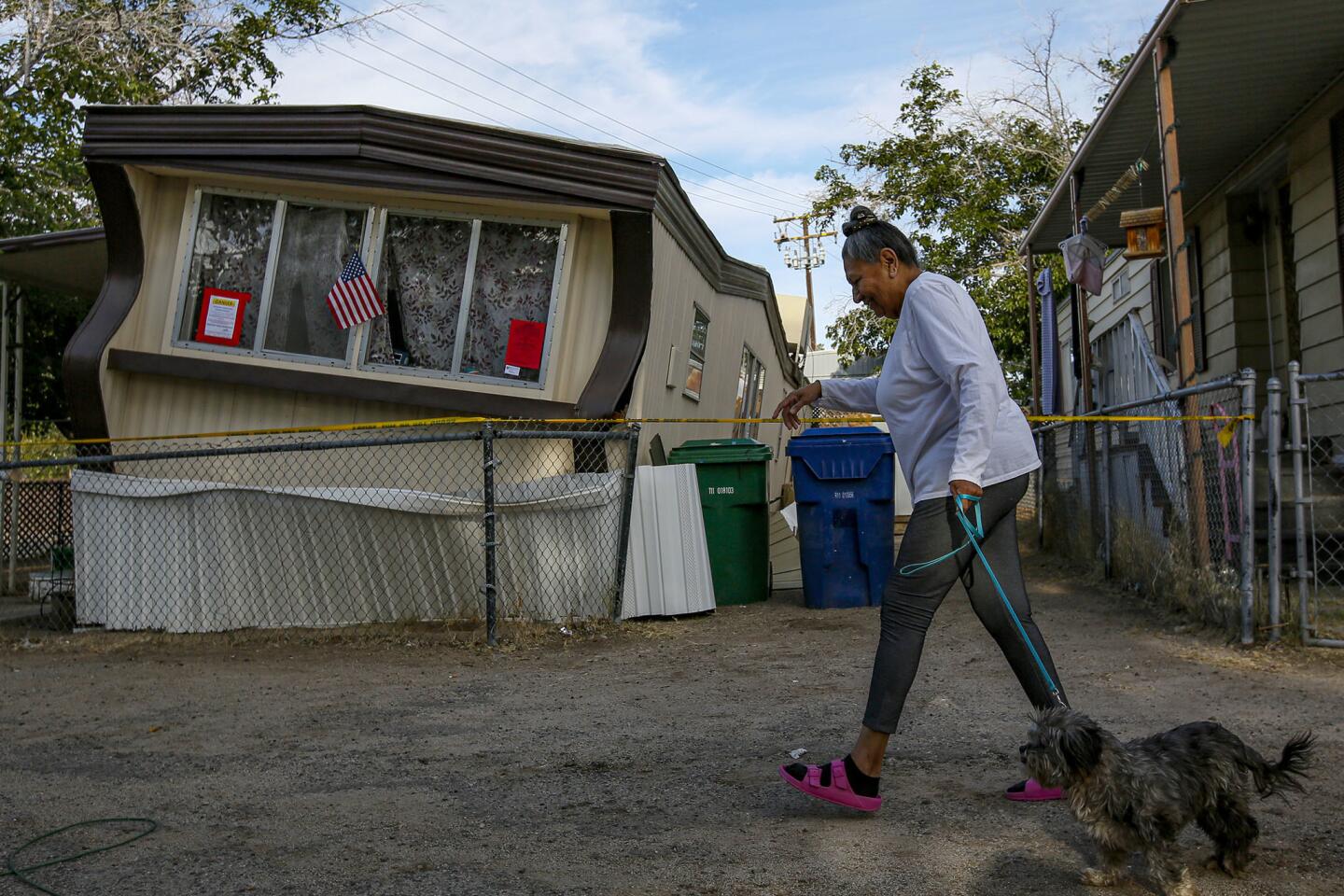For Ridgecrest, the ‘earthquake capital of the world,’ temblors shake but don’t break
- Share via
Reporting from Ridgecrest, Calif. — After the earthquake hit Chuck Pryor’s Ridgecrest ranch home Friday night, sending wine glasses crashing to the floor, the lifelong Californian said he wasn’t going to budge.
“I have been through earthquakes my entire life,” said Pryor, 76. But he added that the magnitude 7.1 quake impressed him with its intensity: “It felt like Mother Nature had a bullwhip and cracked the whip at the end.”
For some who live in this small Mojave Desert town, where many work in mining or for the military, the second serious earthquake in two days felt like a sign.
“We’ve been wanting to get out of here anyhow,” said Matt Warren, a mine superintendent who has lived here with his wife for more than 20 years. “The time is right.”
Full coverage: 2nd major quake in two days hits Southern California »
During the shaking Friday night, he ran to the end of his driveway and clutched the stop sign until it passed. Then he watched cars blowing though stop signs in a rush to escape the neighborhood. He and his wife were afraid to go back inside their house.
“I bet we’ll be in the trailer tonight,” he said. “I’m on pins and needles.”
There were no deaths or serious injuries reported in the temblor, which was about 10 times larger than the one that struck on the Fourth of July. Still, the quake tipped buildings off their foundations, caused several gas leaks and fires, destroyed mobile homes and temporarily knocked out power in the area.
“We’re very lucky and happy there wasn’t anything worse,” said Mark Ghilarducci, director of the California Governor’s Office of Emergency Service.
Kathy Vander Houwen’s mobile home shifted more than a foot on its foundation, and the county yellow-tagged it. She knew that she would have to leave with her two cats, Snuggles and Frisky. She planned to stay with her best friend, but said she had no idea what she would do in the long term.
“This place is paid for,” said Vander Houwen, 76. “I’m too old to start over again.”
In Ridgecrest on Saturday, many businesses remained closed because of damage, including Rite Aid, Marshalls and Dollar Tree. At Denny’s, one of the few restaurants that was open, diners waited almost an hour for seats. At McDonald’s, a sign on the door said the restaurant was “serving first responders, police and fire department inside only.”
At the Best Western hotel, a note in the lobby asked customers for their patience. “Some staff members have lost their homes and are tending to their families,” the note read. “For that reason we are short staffed.”
By Friday night, Javaid Waseem, 45, had made real progress cleaning up the mess at his Ridgecrest convenience store from the 6.4 earthquake of the day before.
The unbroken wine bottles were back in place, the motor oil had been wiped away and the shelves were lined up once again inside the refrigerators. The 7.1 quake sent everything flying once again. This time, he said, “we lost a lot more.”
On Saturday morning, in between asking customers how they were doing, ringing up orders and surveying the damage, Waseem worried that yet another quake would strike.
“We can’t afford another one, but with Mother Nature we don’t know,” he said.
Ninfa Cazares, 32, was at home in Ridgecrest with her five children and the family dog Friday when the earthquake hit. She said they rushed outside, only to watch their house practically collapse upon itself.
The family spent the night at a Red Cross shelter but are considering taking their RV into the desert to camp. They fear another aftershock.
“I don’t know what to do,” Cazares said in Spanish. “Our whole house fell down…. We can’t live there.”
There were no initial reports of major damage in Los Angeles, more than 100 miles south of the epicenter. But in Trona, a town of about 1,900 people near Ridgecrest, the frequent aftershocks and anxiety about another big temblor made it hard to rest.
Many residents slept on the street in camper vans. Others, such as 60-year-old Ronnie Tolbert and her husband, pulled mattresses onto their frontyard to try to sleep. Her daughter rested in a truck parked on the street. Her grandson and his friends sprawled on mattresses across the road.
Before sunrise Saturday, she used a flashlight to find her way through her home of 32 years, a place where she has raised 11 children. Her fireplace had collapsed, ceiling tiles had fallen and windows had shattered.
“My kids keep asking me what am I gonna do,” Tolbert said. “I said, ‘I don’t know.’”
Officials cautioned people not to spend prolonged time sleeping outside in the high desert without water or air conditioning and urged families to keep a steady supply of water, food and fuel.
It has been two decades since residents of the Searles Valley felt such a big earthquake. A magnitude 5.8 quake rocked Ridgecrest, home to about 30,000 people, in 1995. A 7.1 quake struck about 100 miles to the southeast in 1999.
The high desert area once saw so many temblors that it was known as the earthquake capital of the world, said Caltech seismologist Egill Hauksson.
“This area is quite active, and has been quite active since we’ve had records,” Hauksson said Saturday. Given the size of the previous earthquakes, it’s likely that Los Angeles will still feel some shaking over the next week, Hauksson said.
Two earthquakes this week in rapid succession could make homes more prone to collapse in aftershocks, officials said Saturday. The first aftershock from the Friday night quake registered as a magnitude 5.5.
“Maybe it’s not a 7.1 next time, maybe it’s lower — and with that, there could be more damage because structures are weakened,” Kern County Fire Chief David Witt said at a Saturday morning news conference. “We need to be vigilant.”
Rockslides and cracks temporarily closed portions of Highways 178, 127 and 190. Caltrans crews worked through the night to open some lanes on all routes by Saturday morning.
The quake caused damage to a U.S. weapons testing facility outside Ridgecrest, the Naval Air Weapons Station China Lake, although details were sparse early Saturday. The 1.1-million-acre facility is the Navy’s largest, covering an area larger than Rhode Island.
The facility is “not mission capable until further notice,” the naval base said on its Facebook page. However, officials said, security protocols “remain in effect.”
Caltech seismologist Lucy Jones said she could not recall a pattern of earthquakes in California in which a 6.4 foreshock was followed by a 7.1 event, only to be followed by an even bigger quake. But that doesn’t mean it can’t happen, she cautioned.
“It is clearly a very energetic sequence, so there’s no reason to think we can’t have more large earthquakes,” she said.
Ridgecrest Mayor Peggy Breeden said she encourages residents to take safety precautions over the next few days until the seismic activity has subsided. She said the town shouldn’t suffer any long-term consequences from the last several days.
She doesn’t believe residents will flee to other cities.
“We’re used to this,” she said after a news conference. “We live in the earthquake capital of the world, so I’m told. Our people are strong.”
At the Trousdale Estates mobile home park in Ridgecrest, which was hard hit by the quake, resident Lori Churchill said she was wearing the same blue nightgown she had worn for two days and hadn’t slept more than a few hours here and there. Her mobile home had not been jarred from its foundation, but she worried what would happen if another quake hit.
“I’m walking around kind of like a zombie,” she said.
Gov. Gavin Newsom and other officials stopped by the mobile home park Saturday afternoon to assess the damage. Newsom asked Churchill and her companions where they would sleep that night.
“I don’t know,” she said.
Newsom mentioned the Red Cross shelter nearby. Churchill knew of the shelter but had not gone to it for fear it might collapse too.
“They’re waiting for this other earthquake to come,” she said. “If it comes, what does it matter if you’re at the Red Cross.”
Times staff writers Christopher Goffard and Laura J. Nelson contributed to this story.
More to Read
Sign up for Essential California
The most important California stories and recommendations in your inbox every morning.
You may occasionally receive promotional content from the Los Angeles Times.

